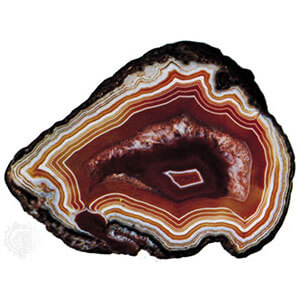
Agate
Agate is varied and beautiful. There are several types of agate: Cyclops agate is a Mexican agate showing only a single eye. Moss agate has colors and filaments suggestive of vegetable growth. Dendritic agates have fern like patterns in them. Turritella agate is formed from silicified fossil Turritella (snail) shells. Agatized coral is in essence petrified cora often referred to as Petoskey stone. Certain stones when viewed in thin sections using transmitted light show a lovely diffraction spectrum caused by the extreme delicacy of the successive bands. They are called rainbow agates. Sometimes agate coexists with layers of masses of opal, jasper or crystalline quartz. Other forms of agate include carnelian agate, faceted Botswana agate, Greek agate, Brazilian agate, Ellensburg blue agate, blue lace agate, plume agates, Mexican crazy-lace agate, and much more. You’ll find agate used in pins, brooches, paper knives, inkstands, marbles and seals. Agate is also used to make mortars and pestles used by pharmacists to crush and mix chemicals. It is also used for leather burnishing tools.
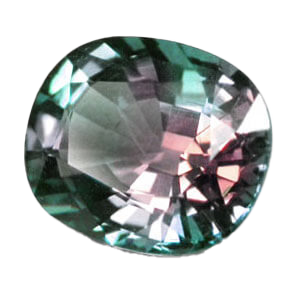
Alexandrite
The Russian Czar Alexander II (1818-1881) has the distinction of having his name on this rare gemstone. The very first crystals were discovered in April 1834 in the emerald mines near the Tokovaya River in the Ural Mountains. The discovery was made on the same day the future Czar of Russia came of age. Because the stone shows both read and green, the principal colors of old Imperial Russia, it became the national stone if Czarist Russia. George Frederick Kunz (1856-1932), master gemologist for Tiffany’s, produced some beautiful series of rings and platinum ensembles at the end of the 19th and beginning of the 30th century. This lovely stone was also used in Victorian jewelry produced in England. The distinctive feature about this stone is its ability to change color. In daylight Alexandrite appears green or bluish-green but when brought into incandescent light it will turn to a soft shade of red, purplish-red or raspberry red. Because of its ability to change colors Alexandrite is one of the most valuable gemstones of all! Scarcity is another reason for its high value. Its formation required specific geological conditions and millions of years to form. The deposits of Alexandrite in the Urals have been exhausted. Today it is found mainly in Sri Lanka and Zimbabwe. Minor deposits have been found in Burma, Brazil, Madagascar, and Tasmania. The largest stone of 1876ct was found in Sri Lanka. The largest cut stone weighs 66ct and is in the Smithsonian Institution in Washington.
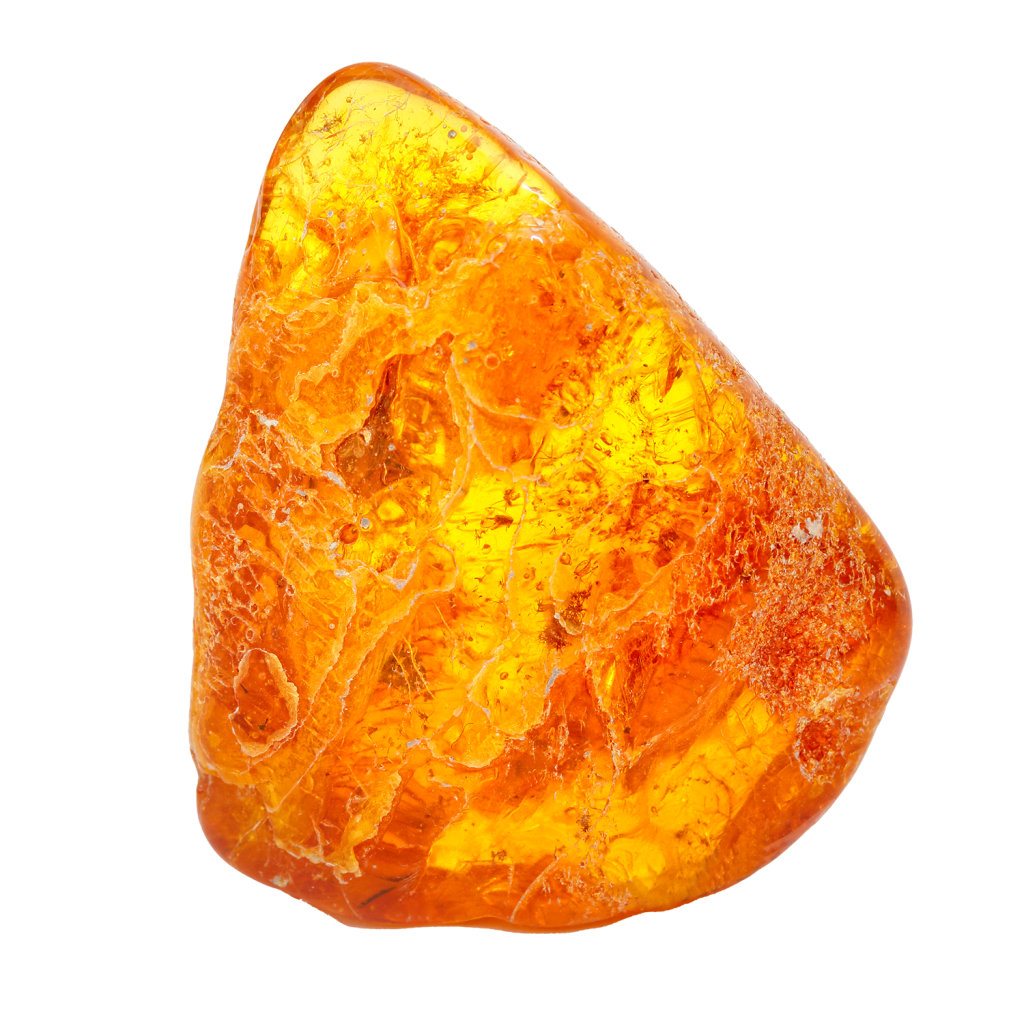
Amber
If you watched the movie Jurassic Park you probably know that amber is fossilized pine tree resin and that some amber have insects trapped inside. In the movie the scientists extracted dinosaur DNA from a mosquito. It made a good story but it does not comport with the geological history of the earth. A mosquito trapped in amber could not contain dinosaur DNA because most amber is too young. It’s only 25 to 50 million years old and the dinosaurs were supposed to have lived and died over 65 million years ago. But don’t let the unlikely story spoil your interest in this most unusual gemstone. The fact is more than 1,000 extinct species of insects have been identified in amber. Amber is mined today in the Baltic states and the Dominican Republic. Dominican Republic amber is older and is the preferred stone. Baltic amber is likely to have insect inclusions. But get this: amber prices can range from as little as $20 to as much as $40,000 or more.
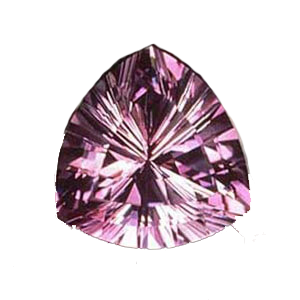
Amethyst
The seductive, violet amethyst has for millenniums thought to have significant powers. Moses described it as a symbol of the Spirit of God and used it in the ecclesiastical robes of the High Priest. The Russian Empress Catherine the Great sent thousands of miners to dig in the Ural Mountains seeking it. The Greeks thought it offered protection against drunkenness. Other cultures thought it would protect crops from tempest storms and ravaging locusts and that it would bring good fortune in war and in the hunt, drive out evil spirits and inspire intellect. Others thought it would protect against snakebite if worn around the neck on a cord made from dog’s hair. Some ancients reported that eagles would put an amethyst in their nest to protect their young from danger, though no one reported how the eagle would manage to mine an amethyst. But wait, there’s more! “Gemstone therapists” say that the amethyst has a sobering and cleansing effect and that it has been said to suppress stomach acid, combat insect bits, and beautify the skin. Some say it puts the wearer in a “chaste frame of mind” and thus became an ornament of the Catholic clergy found in prelates’ crosses and in the Papal Ring (Italian, 15th century) in the Jewelry Museum in Pforzheim. Wow! What a stone! If everyone wore an amethyst what a wonderful world this would be!
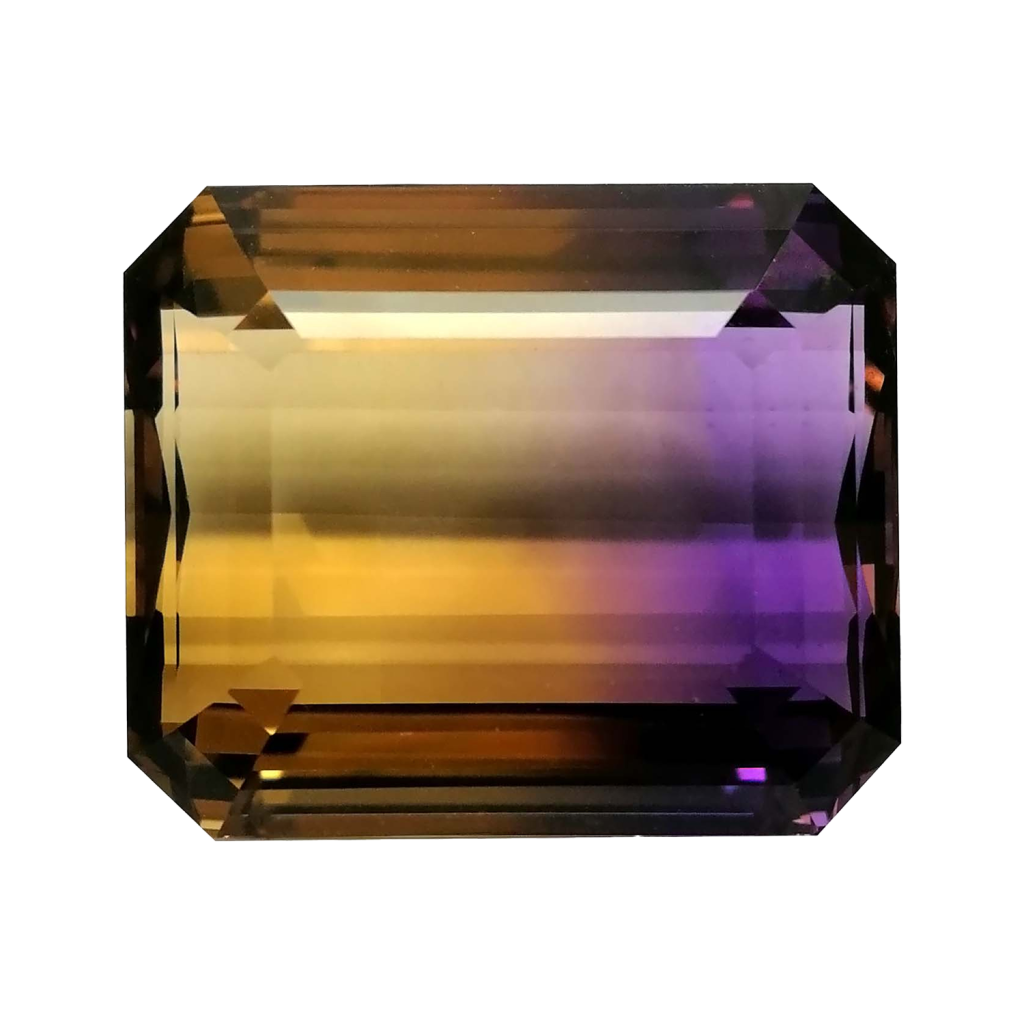
Ametrine
Purple and gold! Sounds like the Minnesota Vikings, right? Perhaps so, but it is also how you describe the lovely colors of ametrine. With amertine you can have two rich colors for the price of one…and it’s inexpensive…especially considering the fact that it comes from only one mine in the world – the Anahi Mine in Bolivia. This history of ametrine is romantic and exotic. The original ametrine mine in Bolivia was received by a Spanish conquistador as a dowry upon marrying a princess named Anahi from the Avoreos tribe. He then introduced the gemstone to Europe by giving gifts to his Spanish queen. Ametrine is a very durable gemstone suited to a variety of jewelry uses. Most sizes and shapes are available but the color contrast is most pronounced in sizes of over seven carats. Beware your purchase of ametrine as low priced ametrine may be made from synthetic material. In 1994 a Russian laboratory perfected the industrial production of bicolored quartz crystals that are irradiated to bring out the typical ametrine colors.
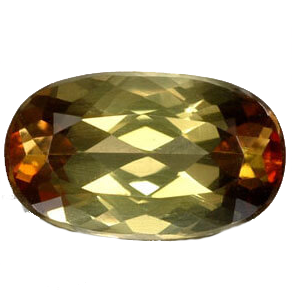
Andalusite
This gem may introduce a new word to your vocabulary: pleochroic. Pleochroic is gemstonespeak for “shows different colors in different directions.” Andalusite is pleochroic – so the goal of the gem-cutter is to shape a stone so it gains a pleasing mix of colors: orange-brown and a yellowish green or gold. When successful, andalusite takes on a unique look dissimilar to any other gemstone. A well-cut andalusite will reveal patterns of dancing colors through the facets. It seems to work best when the gem is cut into a rectangular shape – like a cushion; then the color play is wonderful. If you like earth tones you’ll love andalusite. If you prefer affordable gemstones, that’s another reason to consider andalusite. It is a gemstone that seems to attract the attention of men. Perhaps because it is durable and affordable! Andalusite was first discovered in Andalusia, a province of Spain, that’s how it got its unusual name. Today andalusite can be found in Brazil and Sri Lanka and maybe even at YOUR local jewelry store.
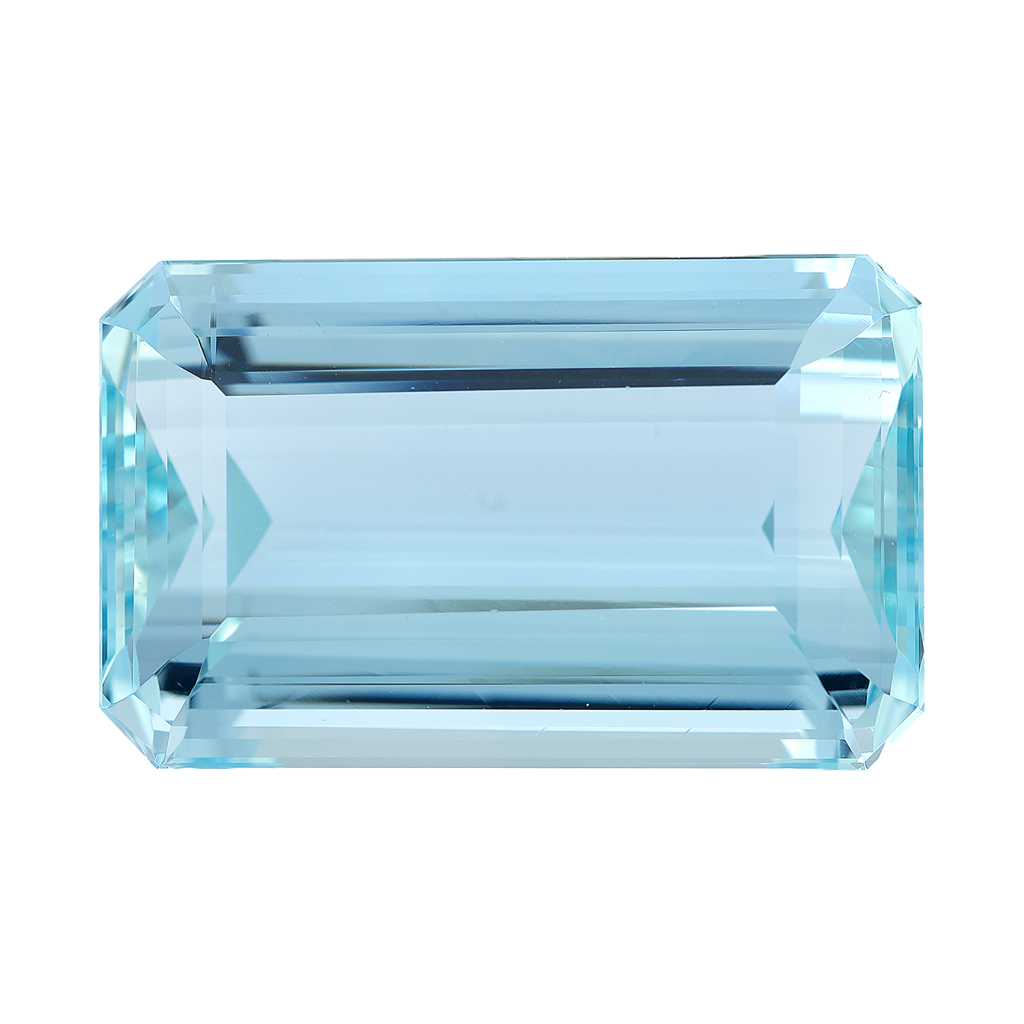
Aquamarine
Who wouldn’t want a gemstone whose various color nuances have such melodious names such as Santa Maria (from the Itabira mine in Brazil), Santa Maria Africana (from mines in Mozambique), Espirito Santo (from the state in Brazil with the same name), and Martha Rocha named after the Brazilian beauty queen of 1954? Who wouldn’t want a gemstone that is said to arouse feelings of friendship, harmony, and trust? Who wouldn’t want a gemstone that, according to traditions, promises marital happiness to the woman who wears it? And who wouldn’t want a gemstone that captures the lucid blue of the oceans and stirs visions of mermaids, treasure chests, and ancient sailing vessels? Who wouldn’t want a gemstone named literally water-sea – from the Latin aqua = water and mare = sea? But aquamarine is much more than a name. It is one of our most popular and best-known gemstones – almost as popular as the ageless ruby, emerald, and sapphire. An outstanding feature of the aquamarine is that it is almost entirely free of inclusions, those solid, liquid, or gaseous foreign bodies enclosed in a mineral or rock. It also has a good hardness that makes it durable and protects it from scratches.
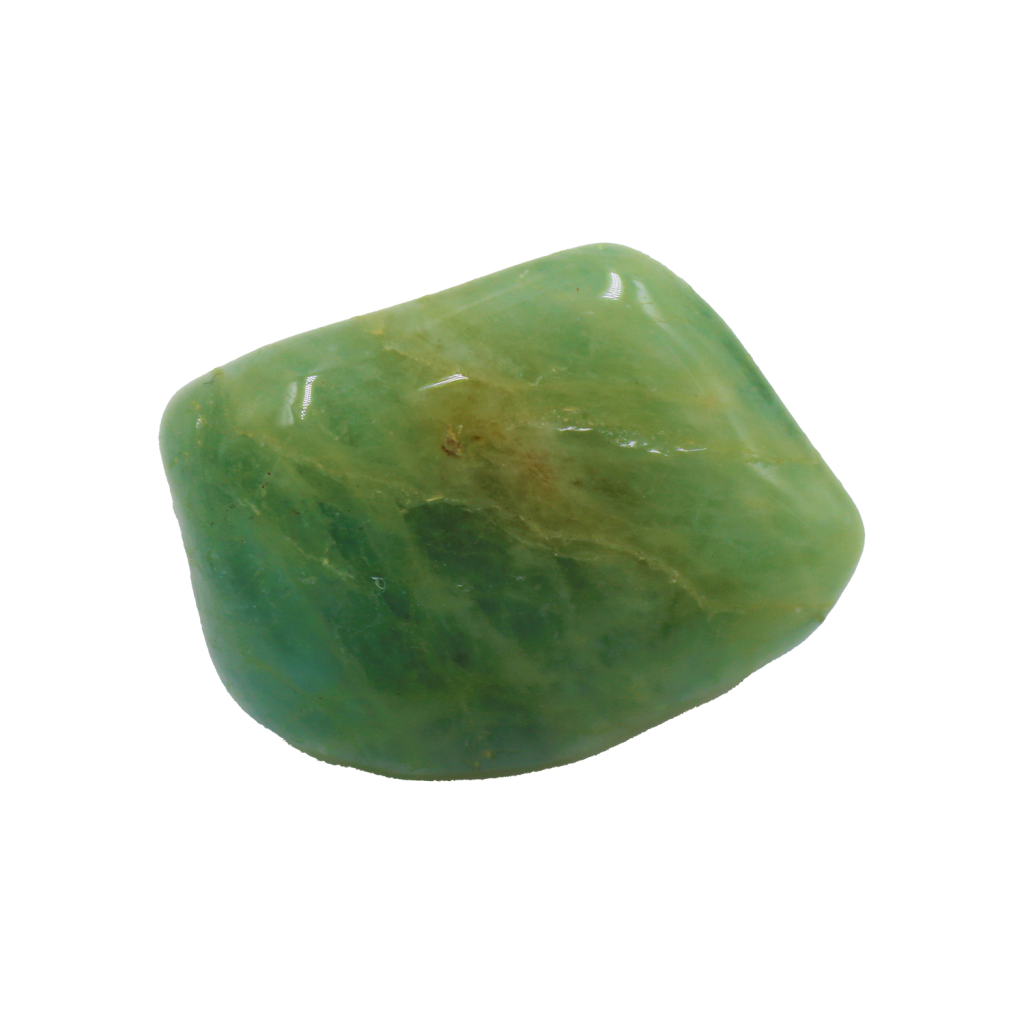
Beryl
Emeralds, aquamarines, and the charming pink of morganite have left gemstone-lovers spellbound for years. They are famous for their variety of color, sparkling brilliance, and suitability for jewelry. What many don’t realize is that they belong to a single family – they are all beryls. There is the rare red beryl, the golden beryl, the yellowish-green heliodor, the pink, or the colorless goshenite beryl all different but all from the same family of gemstones with similar chemical and physical properties. Skilled gemstone cutters are capable of creating a vast array of shapes from beryls although they are best suited for rectangular or square step cuts that amplify their transparent beauty. Beryl is found in the gemstone deposits of South America and those of Central and West Africa. However, they also occur on Madagascar, in Russia and the Ukraine, and in Goshen, Massachusetts where goshenite berly is mined. The skilled hands of gemstone cutters turn them into a multitude of many-faceted shapes. In particular, beryls are well suited to rectangular or square step cuts, since it takes a clear design to bring out to the full the transparent beauty of this colorful gemstone family.
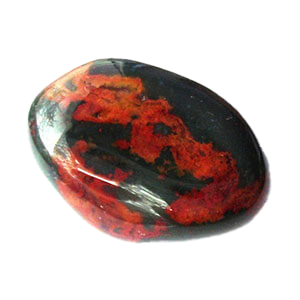
Bloodstone
The martyr’s gem: By its name you would think it would be red, but instead bloodstone is green jasper speckled with bright red spots of iron oxide. It is often referred to as the martyr’s gem because medieval Christians would carve scenes of the crucifixion and of martyrs on bloodstone. An ancient Christian legend held that bloodstone was formed when the blood of Christ fell from his hands, feet, and side and stained some jasper that was at the foot of the cross. In ancient times, bloodstone was thought to be able to stop hemorrhages with only a touch. Some think it relieves stomach and bowel pain and strengthens the blood purifying organs and improves blood circulation. Bloodstone is also supposed to have a positive influence on a bladder. Today in India finely pulverized bloodstone is used as a medication and aphrodisiac. It is mined in Brazil, China, India, Australia, and the United States (Wyoming). Quality specimens of bloodstone are not easy to find though it remains a quite affordable stone used frequently for pendants and bead necklaces.
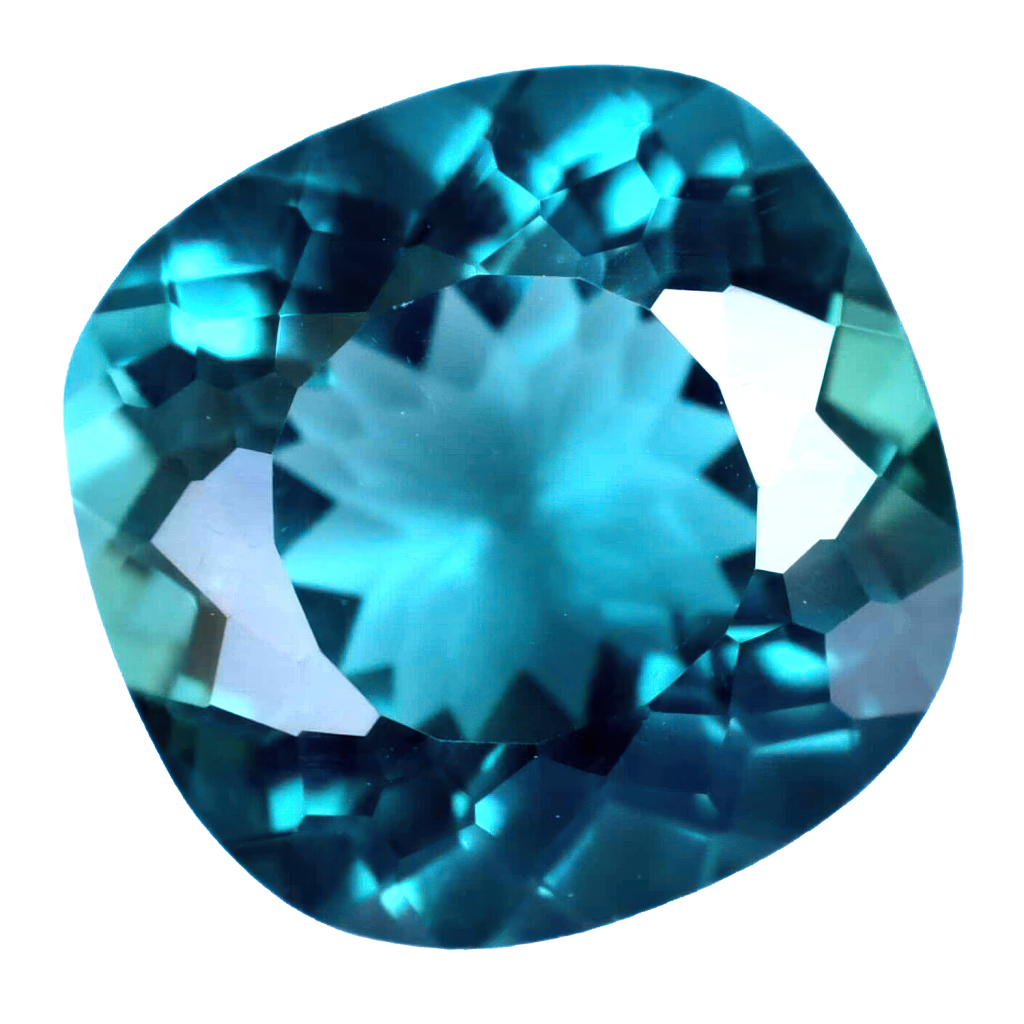
Blue Tourmaline
The tourmaline gemstone group offers gemstone enthusiasts a great variety of colors. However, not all colors occur with equal frequency and they are not equally well known. A pure blue tourmaline with a fervent, translucent, radiant blue is one of the rarest gemstones around. They are highly valued because they are quite scarce and incredibly beautiful. Additional value may come from what some think they do for the wearer. Gemstone therapists* say the blue tourmaline makes people both honest and tolerant. Blue tourmalines have quite a complex structure so cutting them demands patience and experience, something few lapidaries have. The inside of a tourmaline can have areas of tension that can cause the stone to crack while being worked on. A cutter can easily ruin a tourmaline by holding it the wrong way against his cutting-wheel. Once a tourmaline survives the cutting process it is a rather tough gemstone that requires little care. If you’re one of the fortunate few who own a blue tourmaline – the pleasure will be all yours and yours for a very long time! Blue tourmalines originate mostly in Paraiba in northern Brazil. They can also be found in Namibia, Pakistan, Afghanistan, and Nigeria. *Did you know there was such a thing?
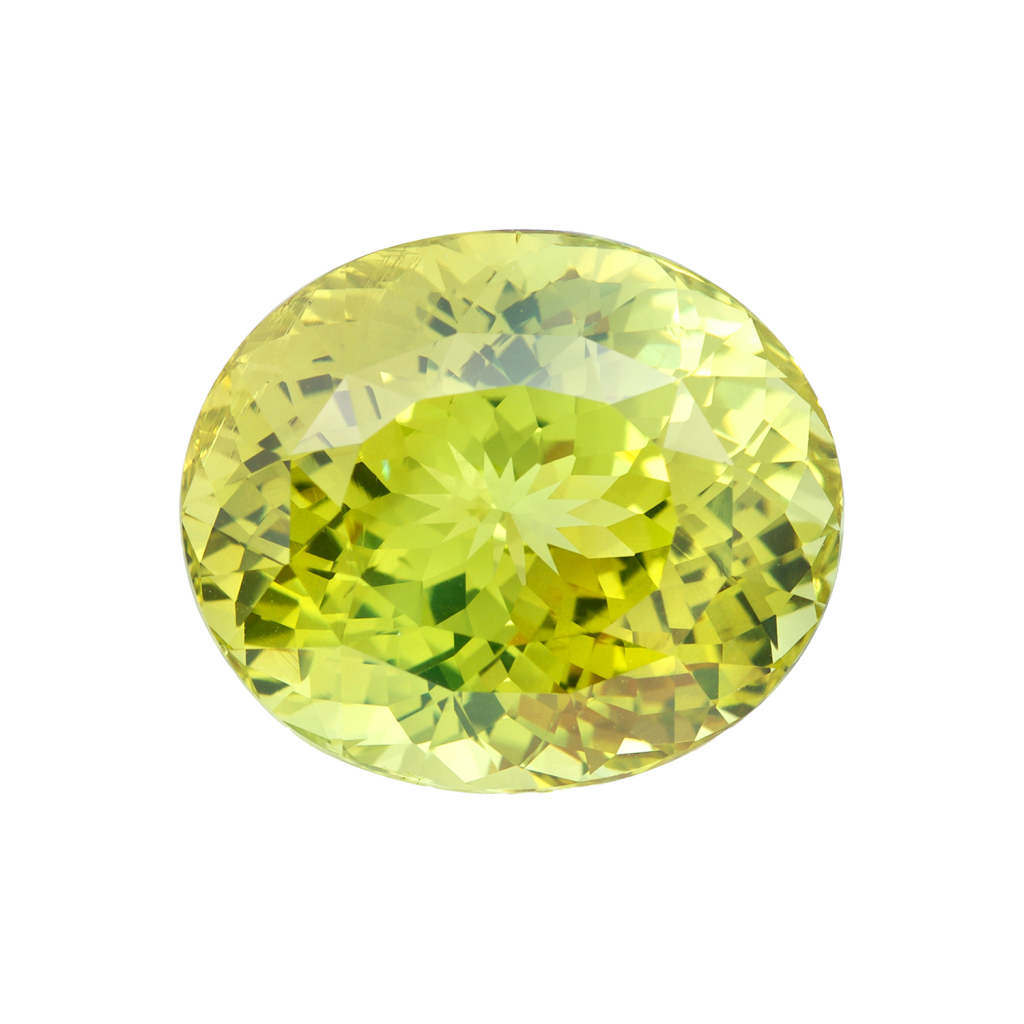
Cat's-Eye Chrysoberyl
The cat’s-eye chrysoberyl reminds many of the eye of a panther with its distinct band of light that crosses its face from side to side. This mysterious looking gemstone is a cousin of the color-changing alexandrite. Chrysoberyl colors range from a honey brown to an apple green with the rich gold colors deemed the most valuable. The principal value factor is the strength and sharpness of the eye. Fine cat’s-eye chrysoberyl often shows a “milk and honey” effect. When a bright light is directed at the side of the stone, one side of the eye will be milky white while the other will glow a honey gold. If you rotate the stone, the colors switch. Perhaps the changing aspect of this stone is why men love cat’s-eye chrysoberyl in their jewelry. And then there’s the myth that a cat’s eye can point fortune in the direction of the one wearing it – just another reason to own this enigmatic gemstone. If you want to find a cat’s-eye for yourself you’ll have to travel to Sri Lanka, Brazil or China and while you’re hunting, don’t confuse the real chrysoberyl cat’s eye with quartz cat’s eyes. Or just drop in to Pinetree Jewelers and we’ll help you find the perfect cat’s eye for you.
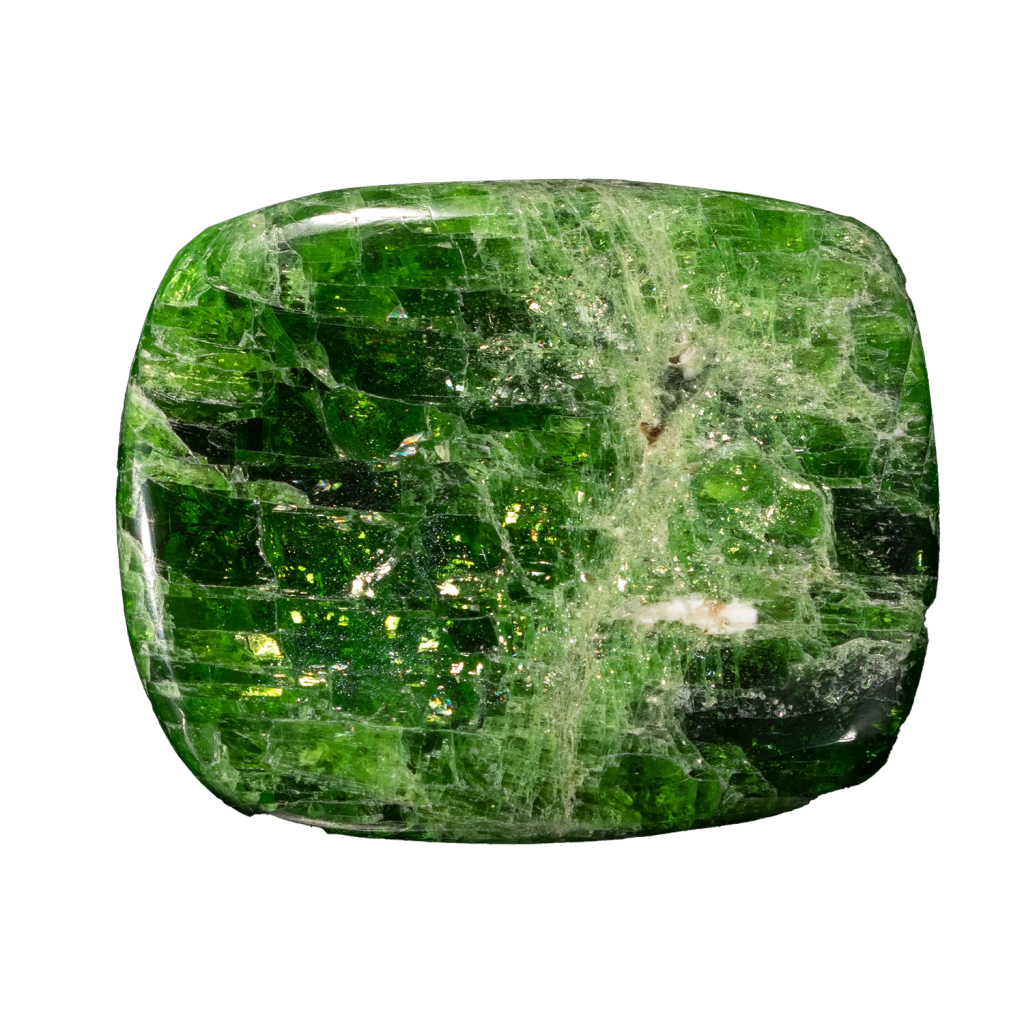
Chrome Diopside
The only thing ugly about a chrome diopside gem is its name. Chrome diopside? Whoever it was who thought up that name should be sent to live in a cheap costume jewelry manufacturing plant for 5 – 7 years without the possibility of parole! This is not a car polish or a social disease, for crying out loud, it’s a gem that features a rich green color and better yet, an incredibly low price. It may well be one of the most affordable pure rich green gems on the market today! So if your check book is low and you need to impress your loved one…think chrome diopside. Ok, so there is one small drawback: Most chrome diopside gems are small. The larger rarer sizes become so rich in green that they are almost too dark. Ok, so there is yet another small drawback: they are relatively soft, with a hardness of only 5.5. Best you wear them as earrings or as a pendant rather than a ring. But remember the good news: chrome diopside bears a rich green color and is usually available at an affordable price.
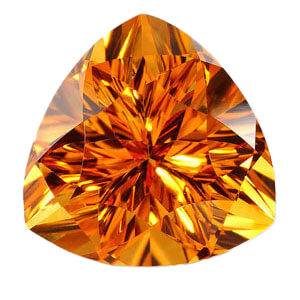
Citrine
The citrine is a member of the quartz family – a large family of colors and varying structures that presents gemstone lovers with a variety of choices in adornment and decoration at a price many can afford. The name comes from the color – the yellow of the lemon – you know, citrus – citrine. The yellow stones have a warm, soft tone that reminds you of autumn. Perhaps that’s why citrine is considered a November gemstone. However, the citrine that are in greater demand are the ones that feature a clear, radiant yellowish to browninsh red. For six decades in the 18th century citrine was mined in Germany. Most of the crystals, however were small – barely a centimeter in diameter. Siberia and Brazil has delivered some larger crystals. In mysticism, the citrine or topaz as it is sometimes referred to, is said to dispel sadness, anger and nocturnal fears. It is also supposed to warn its wearer of poisons and protect him or her from sudden death. I’ll take one, thank you. But the best reason for a man to own a citrine is because it is supposed to make men handsome and intelligent. On second thought, I’ll take three!
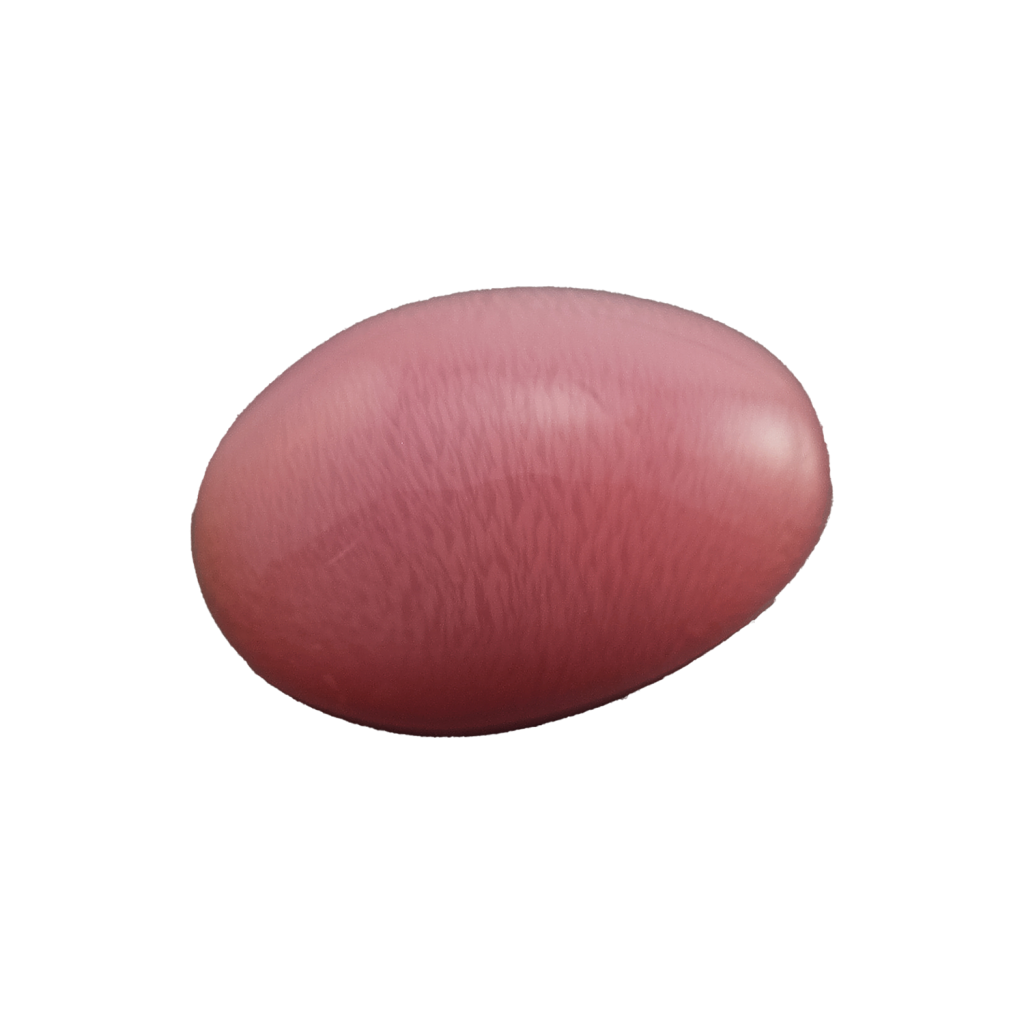
Conch Pearl
The conch pearl is a gemstone you’ve probably never heard of because they are so very rare. Why are they rare? Because it takes about 10,000 Queen Conchs to find one conch pearl and only 1 in 100 of those are of gem quality. And guess what? They are also very expensive. And if you are lucky enough to find a matched set for earrings, they will cost you even more. If you find a conch pearl look for their distinctive “flame structure” – it is the only gem on earth to show this effect. You will not find these pearls in most local jewelry stores, and many jewelers won’t even know what you are talking about should you ask to see one. There are only a few places on earth conch pearls can be found: Key West Florida (also known as the Conch Republic), and the Caribbean. If you ask about conch pearls in either of these places you might want to practice using the proper pronunciation so you don’t sound like a two-dollar tourist: “Conch” is pronounced “conk”.
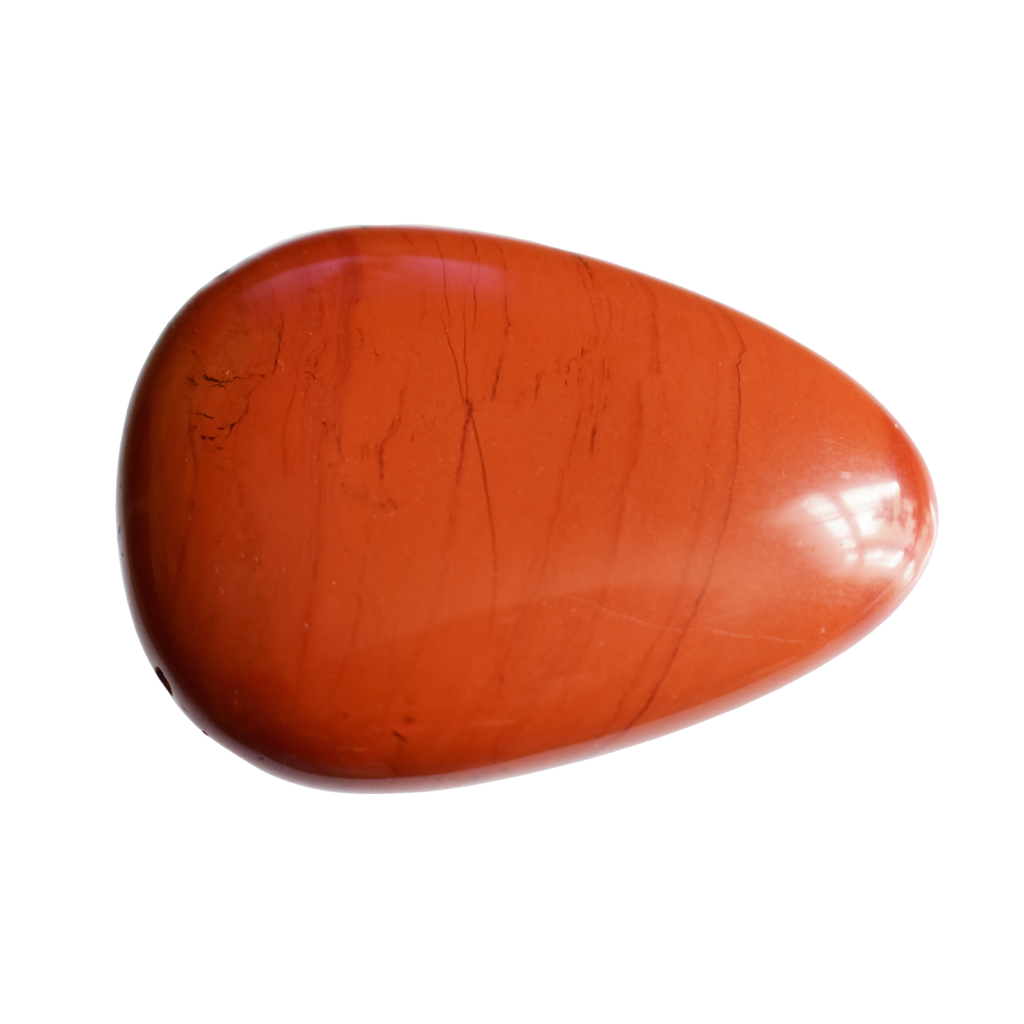
Coral
Coral gemstones come from some of the most beautiful miracles of Nature – the reefs, banks and atolls found in a variety of places around the world. Specially trained divers go into the ocean depths between three and 300 meters to carefully harvest coral. Once brought up the branches are cleaned, sorted and processed using saws, knives, files or drills. It is very seldom cut or ground on a wheel. In its raw form coral has a matt finish, but once it is polished it has a beautiful shine that looks marvelous in a variety of jewelry settings. The fewer the cracks, blotches, striations and holes, the higher the quality and the higher the price. Like pearls, corals are organic and are closely related chemically; both consist of more than 90 percent calcium carbonate. Corals come in a variety of colors: red, white, blue, brown and black. The most popular are the red hues of pale pink and salmon. Corals have a hardness of only 3.5 which makes them softer than any other gemstone material. If you wear a coral be careful with cosmetics, hot water or bright light. Keep your coral pieces clean with a soft, damp towel being careful not to scratch the surface. If your coral does get scratched, a jeweler can have it repolished.
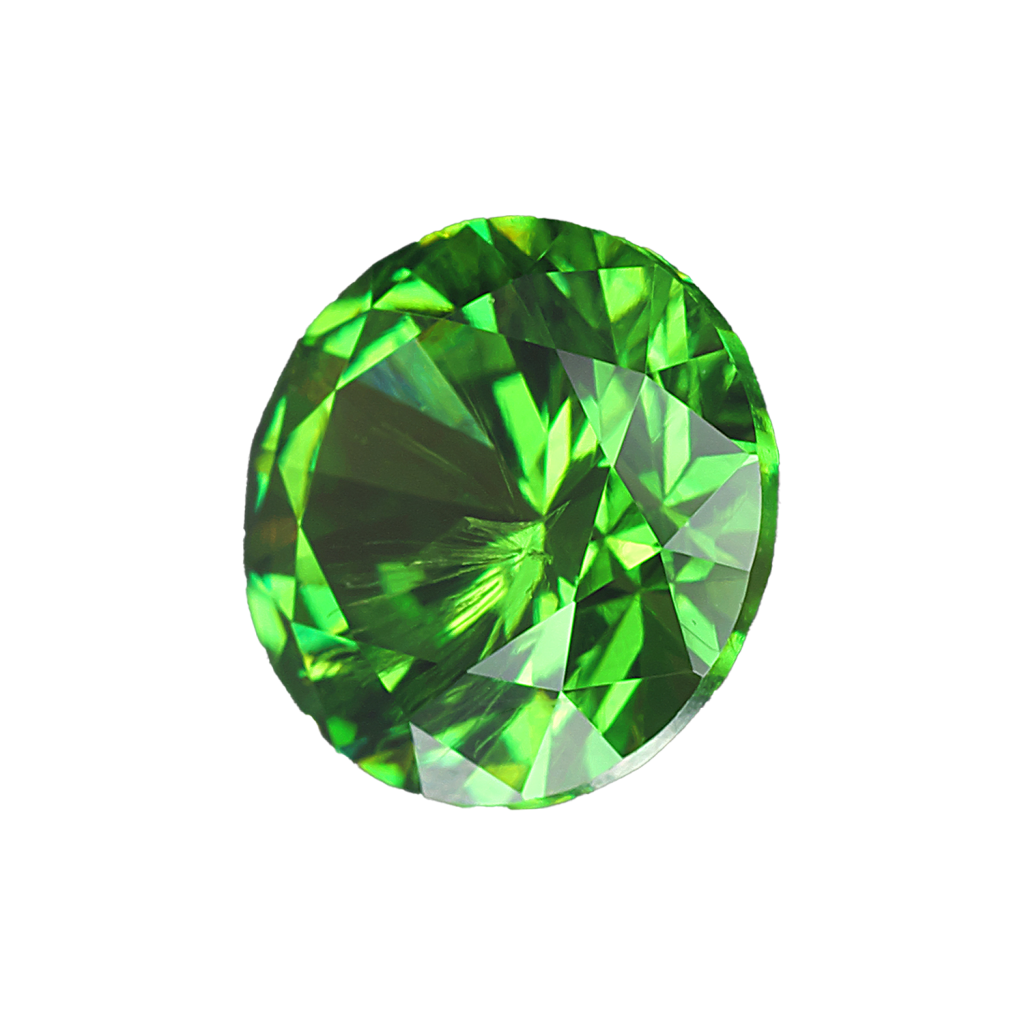
Demantoid
The precious and lovely demantoid is the most expensive kind of garnet on the market today. Gemstone lovers value it because of its rarity and its incredible luminosity, brilliance and fire; perhaps that’s why its name means “diamond-like”. Some gemstone lovers claim that a demantoid will continue to glow even in the shade. There is an explanation: the demantoid has a very high refraction – which means it splits the light which comes in through the facets and breaks it down into a rainbow of colors. Some say it does this better than the diamond. Demantoid specimens come in several shades of green, with the rare deep emerald green being the most precious. Large demantoid are seldom found and always expensive. Most are very small, usually less than two carats and most barely exceeding one carat. Demantoid are found in Russia (the most sought after) and Namibia.
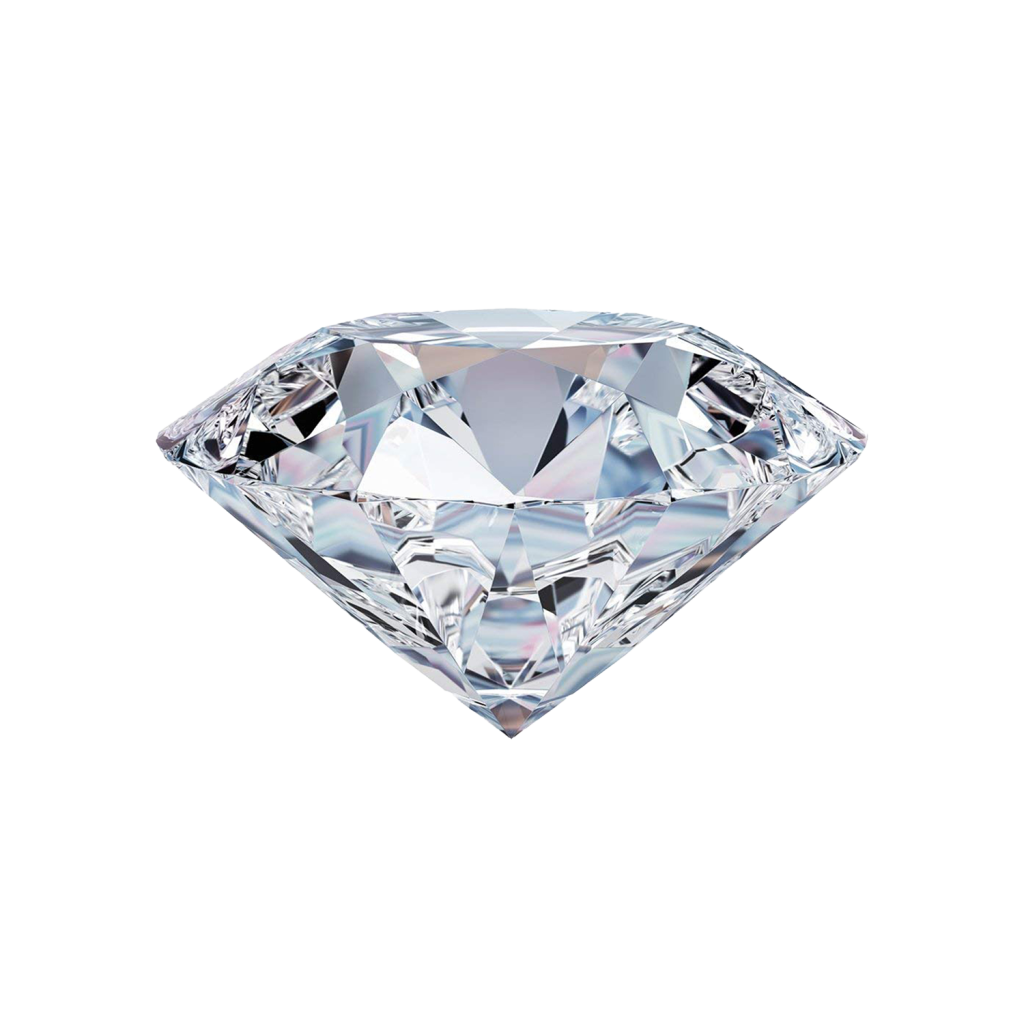
Diamond
Diamond is a stone that excels in brilliance and displays a striking play of prismatic colors. It is the preferred gem in engagement and wedding rings, which are worn every day. It is also the hardest natural material known, where hardness is defined as resistance to scratching. Their hardness makes them quite useful in industry as cutting and grinding tools. Diamonds are used to polish, cut, or wear away any material, including other diamonds. There are diamond-tipped drill bits and saws, and diamond powder is used as an abrasive. Less expensive industrial-grade diamonds, known as bort, are used for such purposes. Diamonds were probably first mind in India over 3,000 years ago (some think over 6,000 years ago). Roughly 49% of diamonds originate from central and southern Africa, although significant sources have been discovered in Canada, India, Russia, Brazil, and Australia. Today experts in the field of gemology grade diamonds and other gemstones based on the characteristics most important to their value as a gem. Four characteristics, known informally as the four Cs, are now commonly used as the basic descriptors of diamonds: these are carat, cut, color, and clarity. Take a look at yours! How does it measure up?
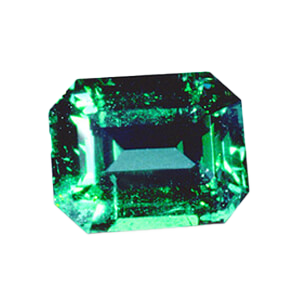
Emerald
You may be familiar with these gorgeous gemstones from the Emerald City in The Wizard of Oz. Imagine a whole city made of gemstones! These gems have long been adored, as even Cleopatra, was a huge fan of them. Ancient Egyptians believed emeralds held mystical powers and could be used to treat eye disease. They were also seen as a symbol of fertility, youth, and rebirth, which led them to often bury their dead with the stone. It even happens to be the gem of the springtime and is the birthstone for the month of May. Emerald is actually a particular variety of a mineral called beryl, a category that also includes aquamarine. Gemologists don’t always agree on what level of green color classifies a stone as an emerald, but if it’s too light, it’s referred to as green beryl. Emeralds are typically cut in rectangular step cuts called emerald cuts, which allow their brilliance to really shine.
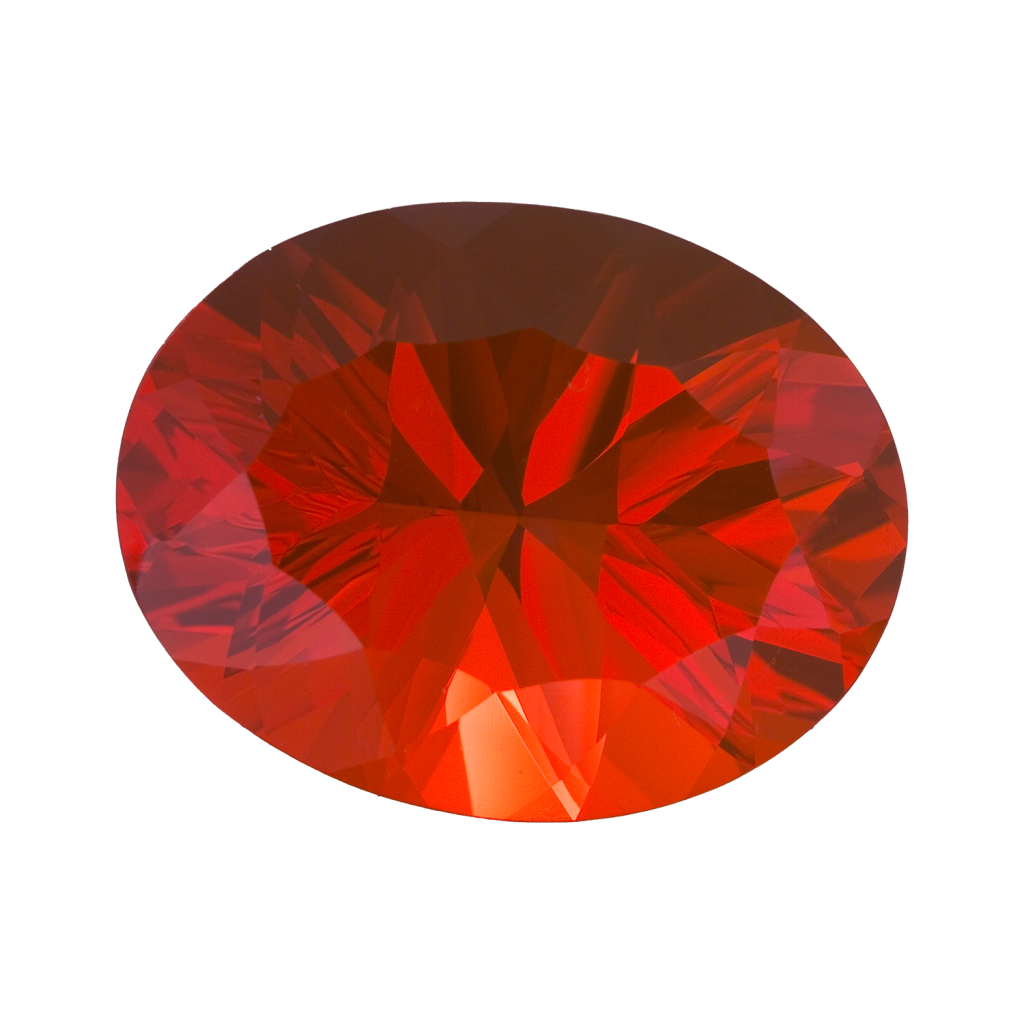
Fire Opal
Perhaps the most remarkable thing about fire opals is the size of the raw stones. Some are as large as a baseball, which increases the variety of ways they can be utilized. Their color is also distinctive. Fire opals have a warm, expressive orange color that varies from yellow to light red, and from time to time, a slight tinge of brown. They can also have a flashy play of color, something typical of opals. The price of a fire opal is determined by three factors: the play of color, the body color and the level of transparency. The more transparency and ‘fire’ it has, and the more intense the deep red of its body color, the more valuable it will be. Mexico provides gem collectors with the highest valued fire opals; they yield up intense red-orange fire opals that have a robust play of color. So popular is the fire opal in Mexico that it has become their national gemstone. Fire opals are said to appeal to people who are active and who bear a positive approach to life. Perhaps it is their fiery color that helps their owners experience the beauty of life and discover joyfulness in daily living.
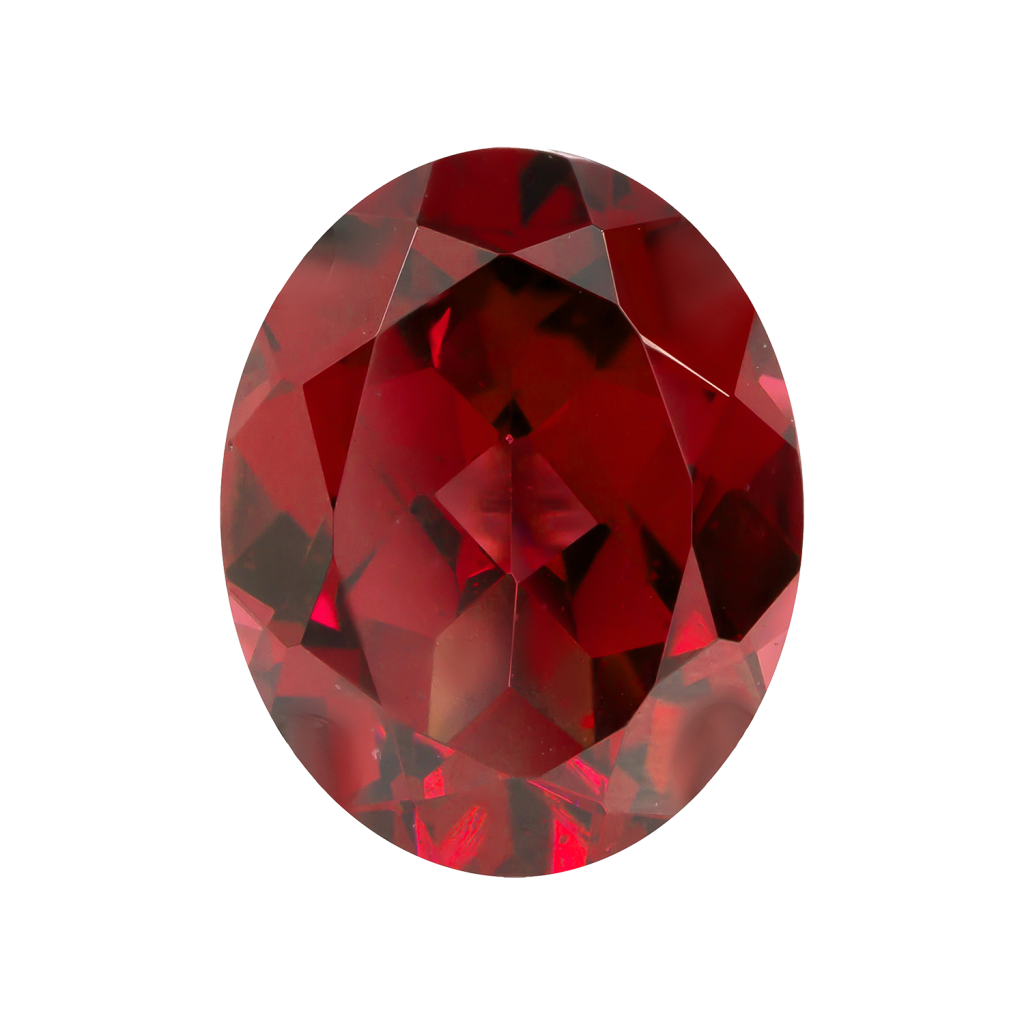
Garnet
Red is the color most often connected to this gemstone that is often found in antique jewelry. However, the world of garnets is far more colorful than that just red Spectacular finds, especially in Africa, have enhance the traditional image of the garnet with a number of lovely hues including shades of green, a variety of yellows, a blazing orange and some very nice earth-colored shades. The only color never found in a garnet is blue. This number of garnet hues has enabled this gemstone to continue to be trendy and stylish. While fairly common, the garnets have some rare stones such as star garnets whose color changes depending on whether displayed in artificial or natural light. Garnets are found in several African countries, India, Russia and Central and South America. Skilled hand of cutters all over the world over cut garnets into both classical and designer shapes. If your jewelry features a garnet stone you can be confident that it will last a long time and the brilliance given to it by Nature will never dim.
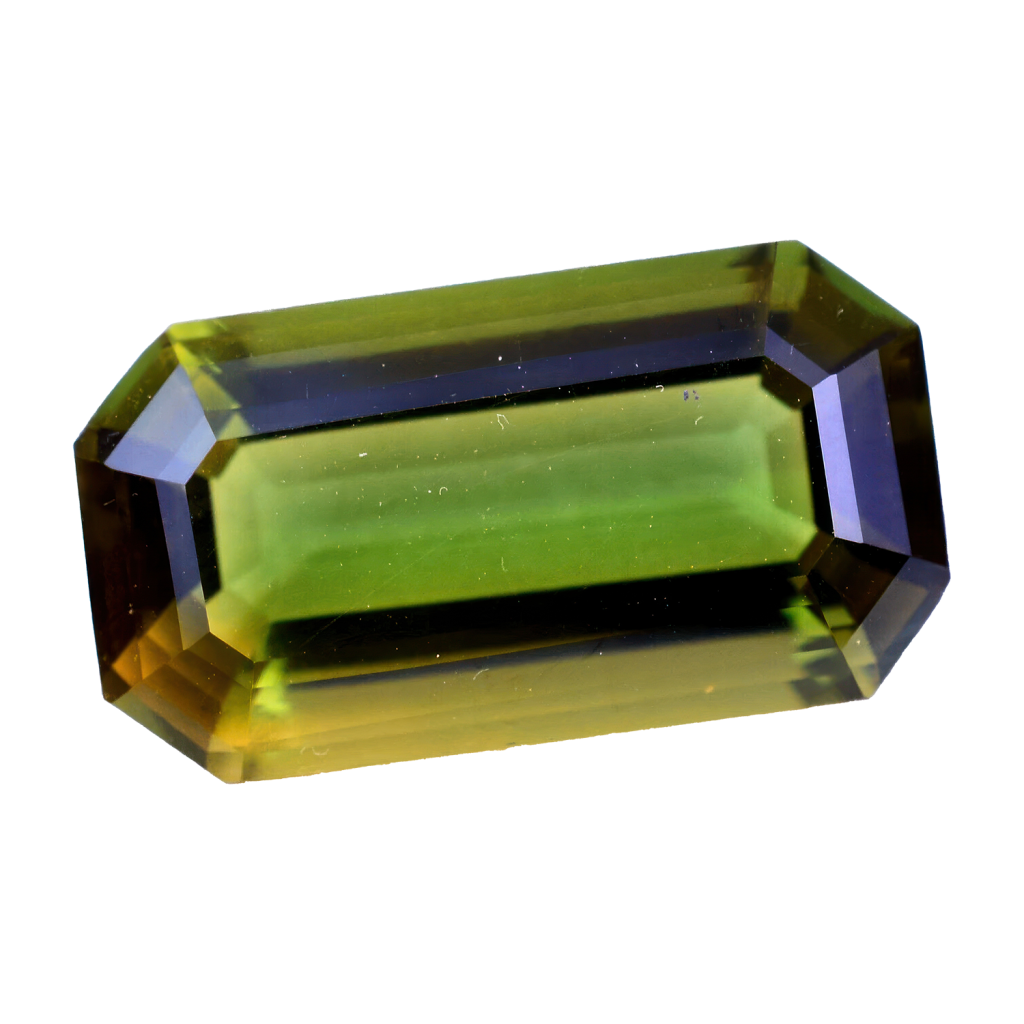
Green Tourmaline
Tourmaline comes in a variety of colors, however green is considered the classical tourmaline color, or should I say shades of green. Some are very light green, and others are so dark that the green color can only be seen when held against a bright light. The blue-green to dark green tourmalines are the most popular but also the most rare, perhaps because they are worn by both men and women. Don’t let the variety of names for tourmalines confuse you. A bottle-green tourmaline my be referred to as a “Brazilian tourmaline” but it doesn’t necessarily mean that the stone came from Brazil…it could have come from Africa. Tourmalines that are a lighter green are often referred to as “African Tourmalines” but it doesn’t necessarily mean they came from Africa…they might have come from Brazil. Totally confused? Me too. Let’s make it simple: If the origin of your tourmaline is important – ask a trustworthy gemologist. Green tourmalines must be cut with special care to preserve their distinctive sparkle and color. To cut them the wrong way could cause the stone to be too light or too dark. You’ll love a green tourmaline ring or necklace because the colors are harmonious with the environment and transmit a stunning vivacity.
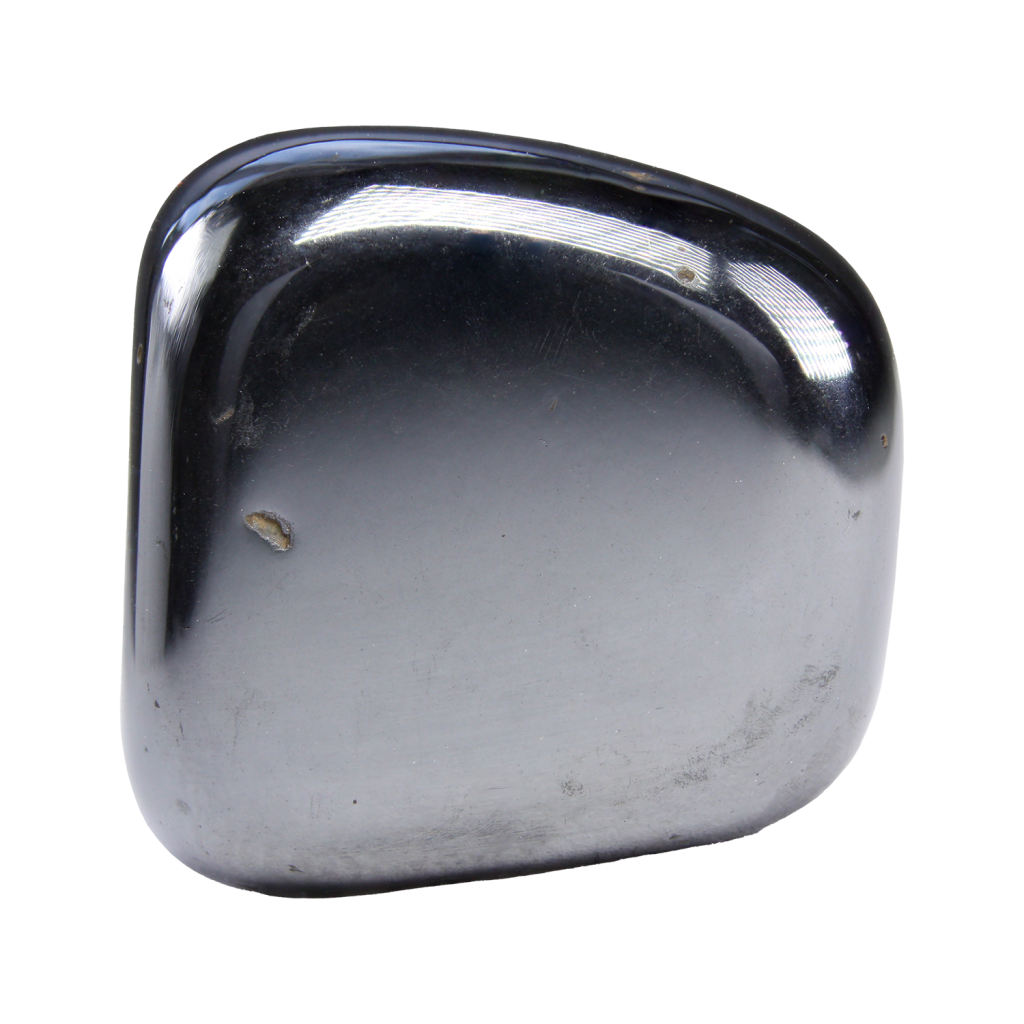
Hematite
This very common mineral consisting of iron oxide has a great array of colors from steel gray to almost black, brown to reddish brown, or red. The variety known as rainbow hematite exhibits colors similar to oil patches on water. The name hematite is derived from the Greek word haimatites for blood. Hematite also occurs everywhere on the planet Mars where it is responsible for the planet’s distinctive red color. It is mined in Australia, Brazil (rainbow variety), England, Mexico, the United States and Canada. It is the state mineral of Alabama, where approximately 375 million tons were mined between l840 and 1975. When cut into thin plates, hematite is red and transparent; when polished it is very shiny. It is commonly used for ring stones and bead-necklaces. In ancient times people believed that large deposits of hematite formed on battlegrounds where injured soldiers bled and died. It was also believed to have healing properties, and had the ability to give strength to the body while lessening life’s stresses. It was also thought to increase optimism and courage and reduce negativity. Sounds like everyone should be carrying a hematite stone in their pocket, don’t you think?
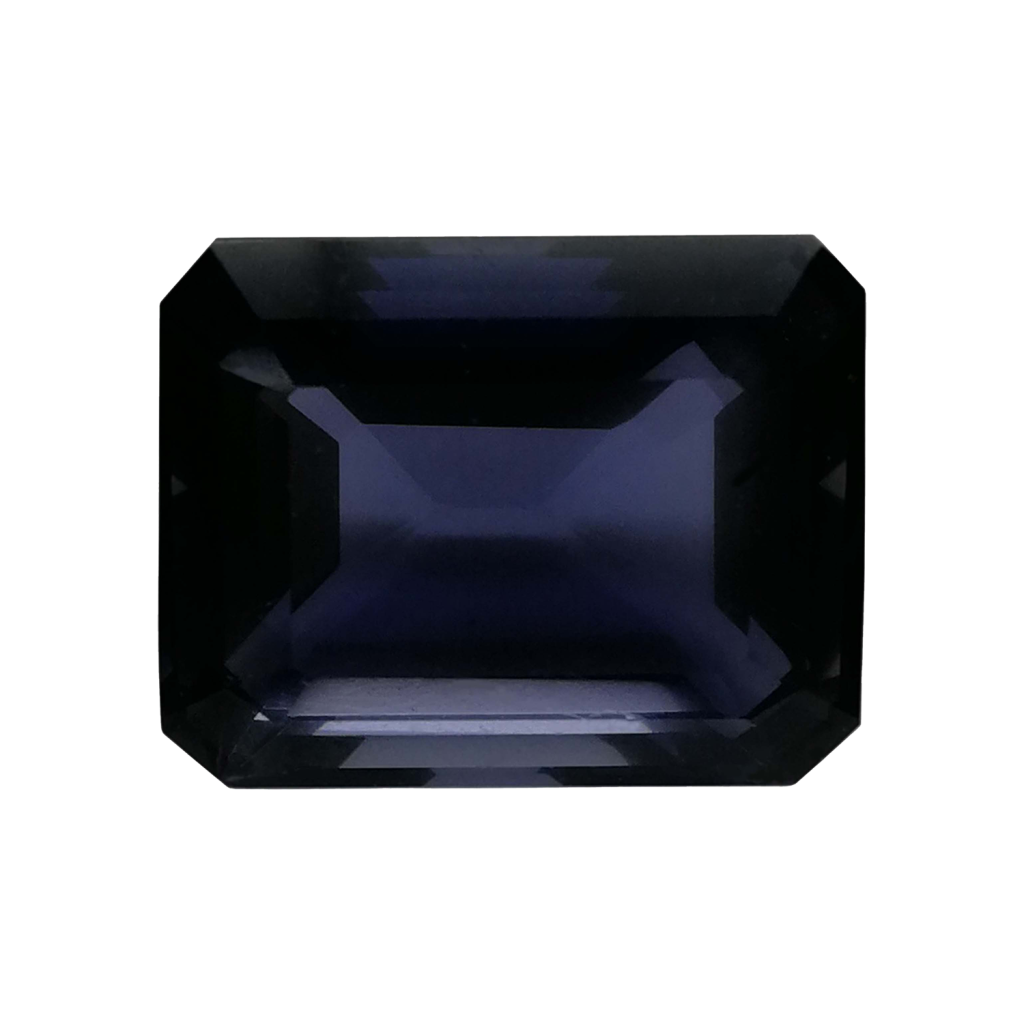
Iolite
Viking explorers were the first to use thin pieces of iolite as a polarizing filter that allowed them to determine the exact position of the sun and thereby navigate safely between their homeland and the New World. The property that made this possible was the extreme pleochroism (the property of certain crystals of exhibiting different colors when viewed from different directions under transmitted light) of iolite. This gem has a variety of colors visible in different directions in the crystal. A cube cut from iolite will look blue/sapphire from one side, crystal clear from the other, and a honey yellow from on top. The same property (pleochroism) that makes iolite useful as a tool for navigation creates problems for the cutter. Iolite must be cut from exactly the right direction or its colors will not be as brilliant. The name iolite comes from the Greek ‘ion’, which means violet. It is a purplish blue when cut properly and it has a softness that makes it very pleasing to the eye and increasingly popular for use in jewelry. The deeper the blue the more valuable the gemstone, but overall, iolite is quite affordable. The Vikings probably got their iolite from deposits in Norway and Greenland, however, today It is mined in India, Sri Lanka, Mozambique, Zimbabwe, and Brazil.
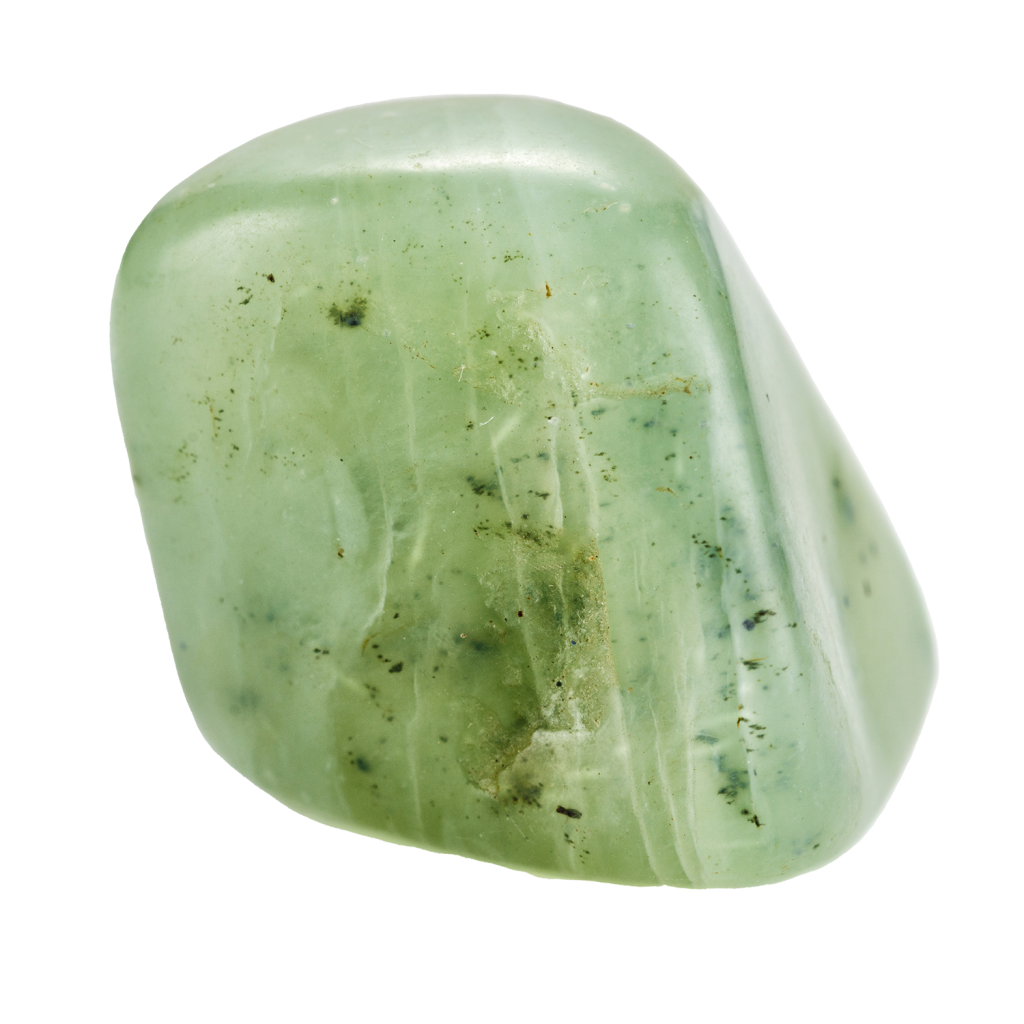
Jade
Jade has been known to mankind for some 7000 years, but in prehistoric times was known more for its toughness and was used for weapons and tools. As early as 3000 BC jade was employed in China as a royal gem and has enjoyed a long history in the art and culture of the Chinese empire. Over the years the people of Asia have placed a greater importance on jade than any other culture. The ancient Mayas, Aztecs and Olmecs of Central America also valued jade – even more highly than gold. The Maoris of New Zealand continue to use jade in weapons and cult instruments, a practice that began in early times. In ancient Egypt jade was admired as the stone of love, inner peace, harmony and balance. Other religions and cultures have also deemed jade as a protecting force and good fortune. Today this gem is believed to be a symbol of goodness, beauty, justice, wisdom, compassion, and courage, not to mention, female-erotic! Jade’s subtle luster along with its naturally toughness may be why it has been so appreciated around the world and down through the centuries. It comes in many fine nuances of green, but also in shades of white, black, gray, yellow, orange and even in delicate violet tones.
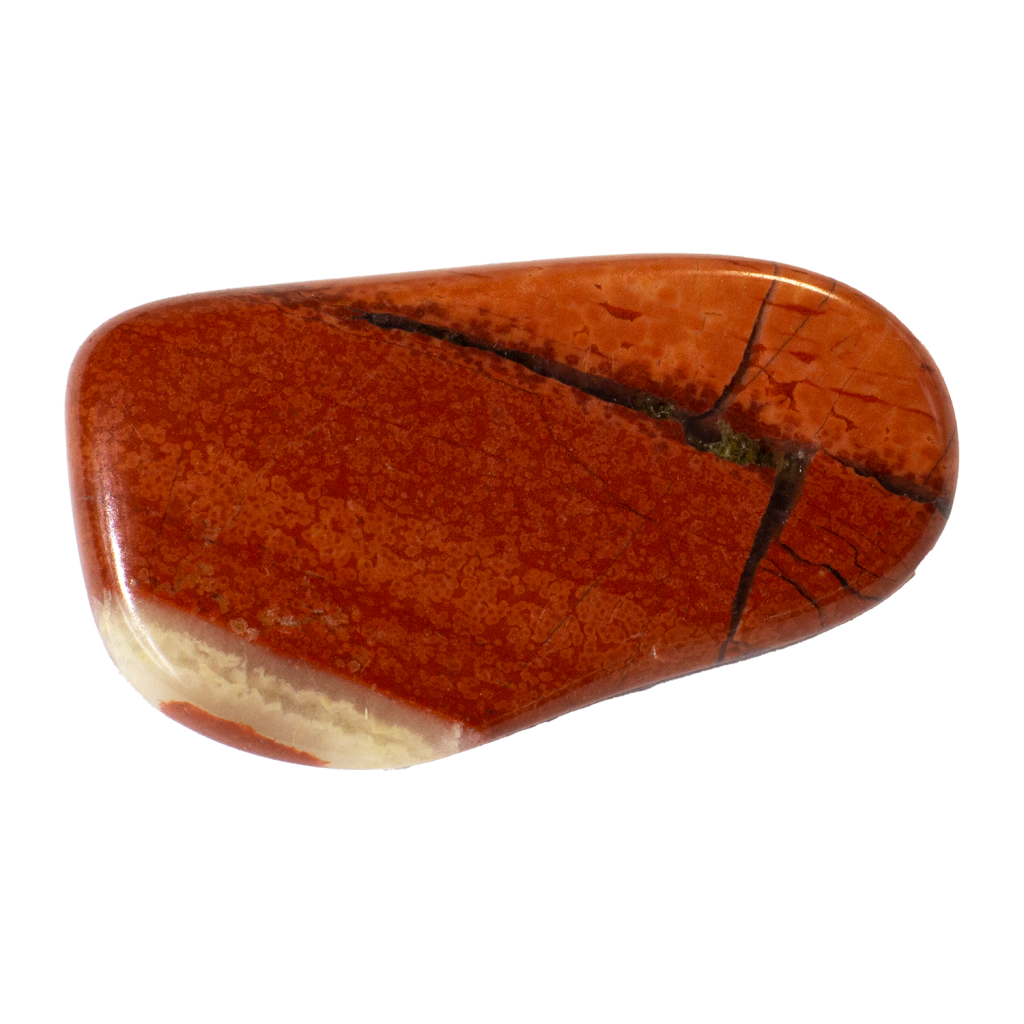
Jasper
Jasper is composed of chalcedony, microcrystalline quartz and other minerals that combine to create colorful bands and patterns. The large variety of jasper patterns are used to give the stones their various names. The most popular is landscape jasper so named because of the tiny landscape panoramas that appear thereon. Picture jaspers exhibit combinations of patterns (such as banding from flow or depositional patterns caused by water or wind), and color variations the look like scenes or images on a cut section. There is also orbicular (circular) jasper, and ribbon jasper. See the variety in the stones shown above. Jasper is found in many countries and used often as architectural adornments on buildings. Perhaps that is because the new Jerusalem descending from heaven is described as follows: “It shone with the glory of God, and its brilliance was like that of a very precious jewel, like a jasper, clear as crystal.” Revelation 21:11.
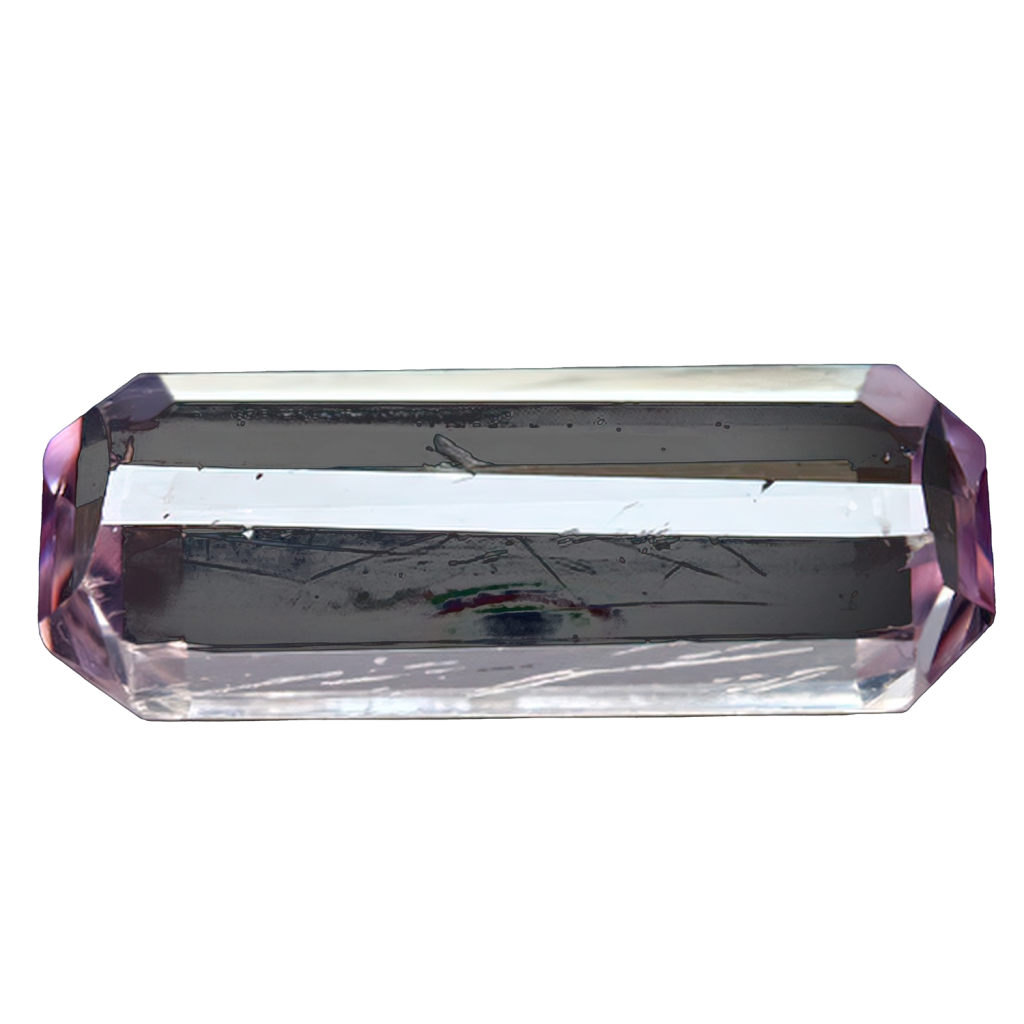
Kunzite
Kunzite is a very young gemstone. In 1902 New York jeweler and gemstone specialist George Frederick Kunz (1856 – 1932) became the first person to provide a complete description of this stone, which had just been discovered in California. Tradition holds that any newly discovered gemstone is to be given the name of their discoverer or patron, hence the exotic sounding name, ‘kunzite’. The allure of this gemstone is seen in its clarity and fine delicate pink nuances and a frequent touch of violet. These delicate, tender hues express a femininity and seductiveness that makes them popular for jewelry. Most kunzites show a light color and robust colored kunzite is rare and very valuable. Mr. Kunz discovered a pale pink kunzite in the Pala District of San Diego County in California. Today, the prism-shaped crystals with their typical vertical striations are mainly found in Afghanistan, Madagascar, Brazil and the USA. The crystals, or fragments of crystals, often badly eaten away, can attain sizes of up to several kilograms.
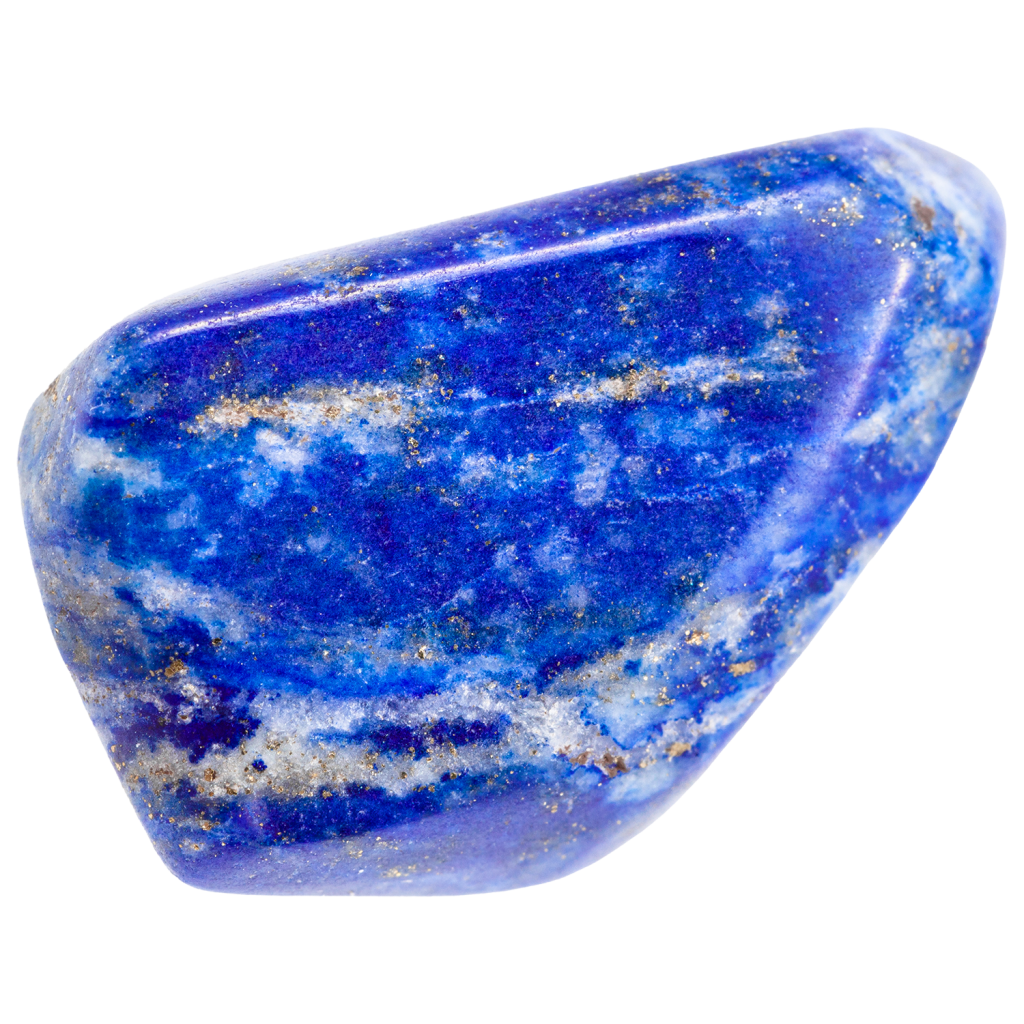
Lapis Lazuli
This opaque, deep blue gemstone was among the first gemstones to be worn as jewelry. Archaeologists have found this gemstone in excavations in a variety of places around the Mediterranean where they were used as decorative chains and figures; indicating the stone has been popular for thousands of years among the people of Mesopotamia, Egypt, Persia, Greece and Rome. Countless lapis lazuli signet rings, scarabs and figures were brought to Europe by Alexander the Great. They referred to the dark blue color as “ultramarine”, which means something like “from beyond the sea.” The name is actually composed from a Latin word “lapis” meaning stone, and an Arabic word “azula” meaning blue. The stone was used by the Old Masters in their art. It was ground up into a powder and mixed together with binding-agents to create a radiant blue used in watercolors and oil paints. Lapis lazuli is regarded by many as the stone of friendship and truth. It is said to encourage harmony in relationships and to help its wearer be authentic and speak honestly.
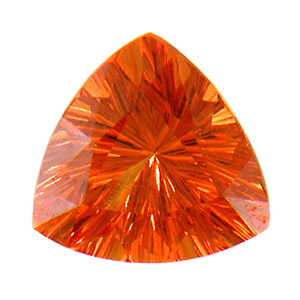
Mandarin Garnet
In 1991 the first mandarin garnets were discov- ered along the winding Kunene River on the border between Namibia and Angola in south- west Africa. It wasn’t long until the mines were depleted and though gemologists thought there was more to be found, the costs of mining forbade any further exploration in the area.Previous to their discovery in Namibia manda- rin garnets had been found in Sri Lanka, Upper Burma, Madagascar, Brazil, Australia, Kenya and Tanzania, and yet they were seldom used in jewelry, though gemstone lovers and collectors appreciated them. Jewelry designers ignored them because specimens with superior color and quality were seldom found. The fantastic crystals from Namibia, on the other hand, were of an unusually fine, intensely radiant orange. Then in 1994 more mandarin garnets with brilliance comparable to the Namibian stones appeared in the marketplace. This time they came from Nigeria and only a true specialist could discern the differences. A sparkling rich reddish- orange, a matchless luminosity, an exceptional hardness, and great rarity makes the mandarin garnet a preferred stone for free spirited individuals with a flare for style.
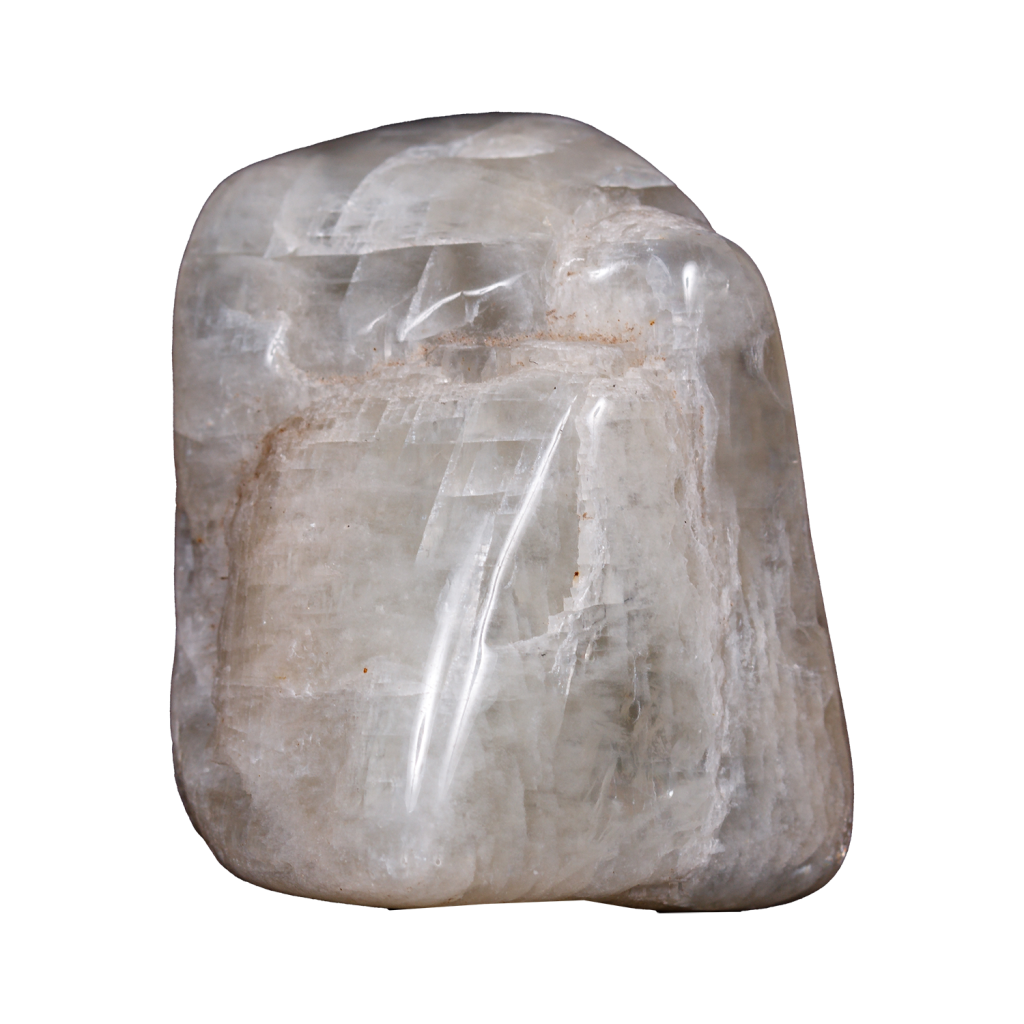
Moonstone
Moonstone, one of June’s birthstones (along with Alexandrite and Pearl), has a mysterious shimmer like that of a bright summer moon. A lovely moonstone gem will play with the light and shadows using the discreet colors of beige-brown, green, orange, brown or blue making it an ideal stone for jewelry. Some call it a “lover’s stone” because it bring to mind soft, tender feelings and transmits the true joy of love. It is also believed that your intuition and wisdom are increased when you wear a moonstone. In India moonstones are regarded as “dream stones” that will bring the wearer delightful visions at night. In Arabic countries women are known to wear moonstones sewn into their garments and out of sight, for in their cultures the moonstone is a symbol of fertility. Moonstones with a bluish shimmer come from Sri Lanka. Since they are becoming more rare as the years go by, their prices are always increasing. Other less rare Moonstones are found in the USA, Brazil, Australia, Myanmar and Madagascar.
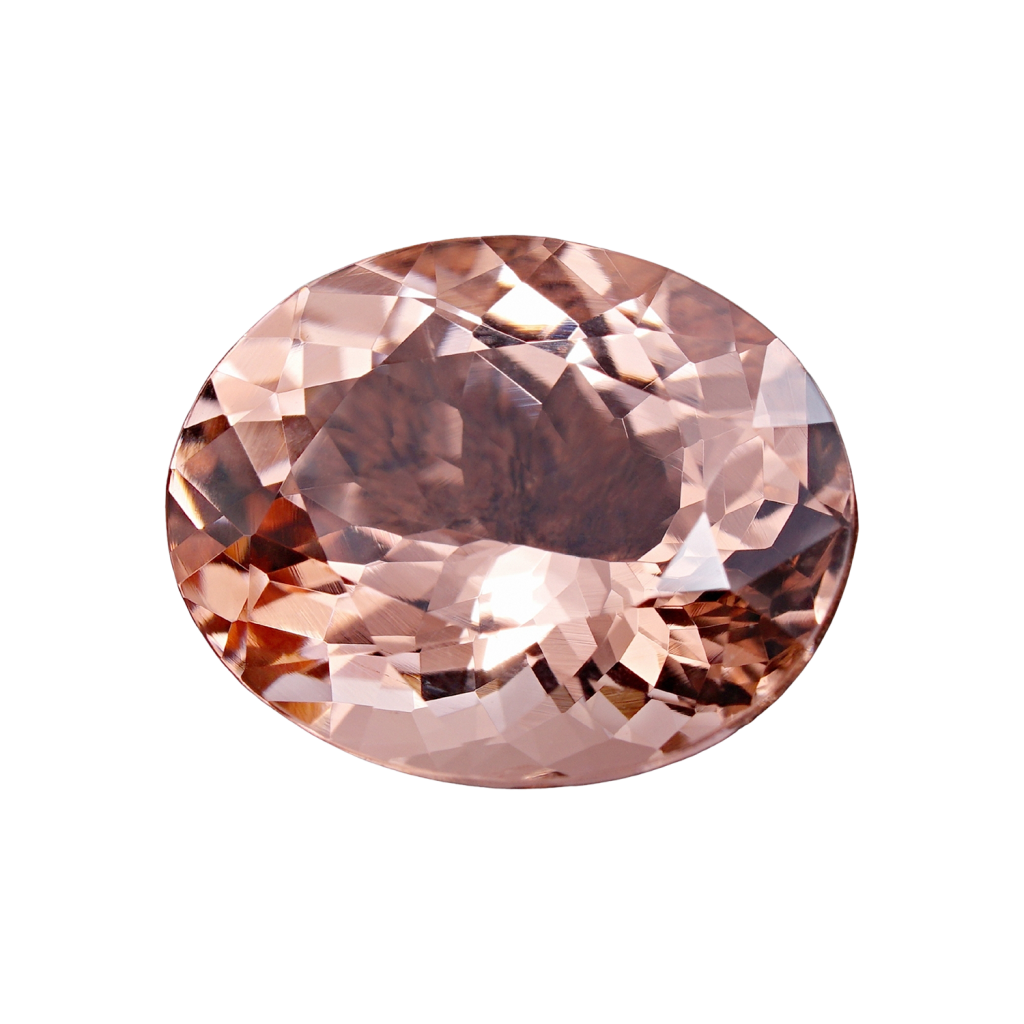
Morganite
Need a little peace, love and joy? Try morganite! Morganite was first classified with the colorful group of the beryls. Then in 1911, upon the suggestion of New York gemologist G. F. Kunz, the pink variety of beryl was named in honor of banker and mineral collector John Pierpont Morgan thus, morganite. Why? Probably because JP Morgan had become one of America’s most important collectors of gems and had assembled the most important gem collection in the U.S. consiting of over 1000 pieces. Morganite features a pink tone that radiates charm, vivacity and tenderness that the colorless beryl does not have. So, if you’re still shopping for that perfect gift – a piece of morganite gemstone jewelry might be precisely what you need. For sure, it will enchant the wearer and endear her to you forever! Some say the very site of morganite puts you in a good mood even when times are tough. Sounds like the perfect gemstone for today’s stress-filled world. We could all use a little peace, a little love, and a little joy!
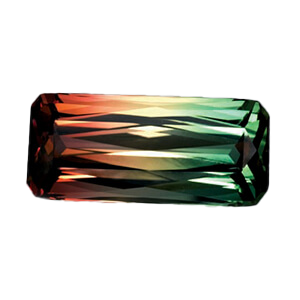
Multicolored Tourmaline
Over the last few week’s we’ve talked about tourmalines: rubellite (red/pink), green, paraiba (blue/green), yellow, and blue tourmalines. There is one more tourmaline that creators of specialized jewelry pieces love – the multicolored tourmaline. Because each multi-colored tourmaline is absolutely unique from the next jewelry makers are able to create absolutely inimitable works of art. Even two stones cut from the same raw crystal can differ in color adding to the varying possibilities for goldsmiths and designers. Tourmalines are not only fashionable as jewelry but may also have therapeutic uses. Many believe they possess energizing and restorative qualities that come from their wealth of minerals and energetic conductivity. If you own a multicolored tourmaline piece you can be almost positive that it is absolutely unique. If you don’t, ask your jeweler to show you one. They’re magnificent.
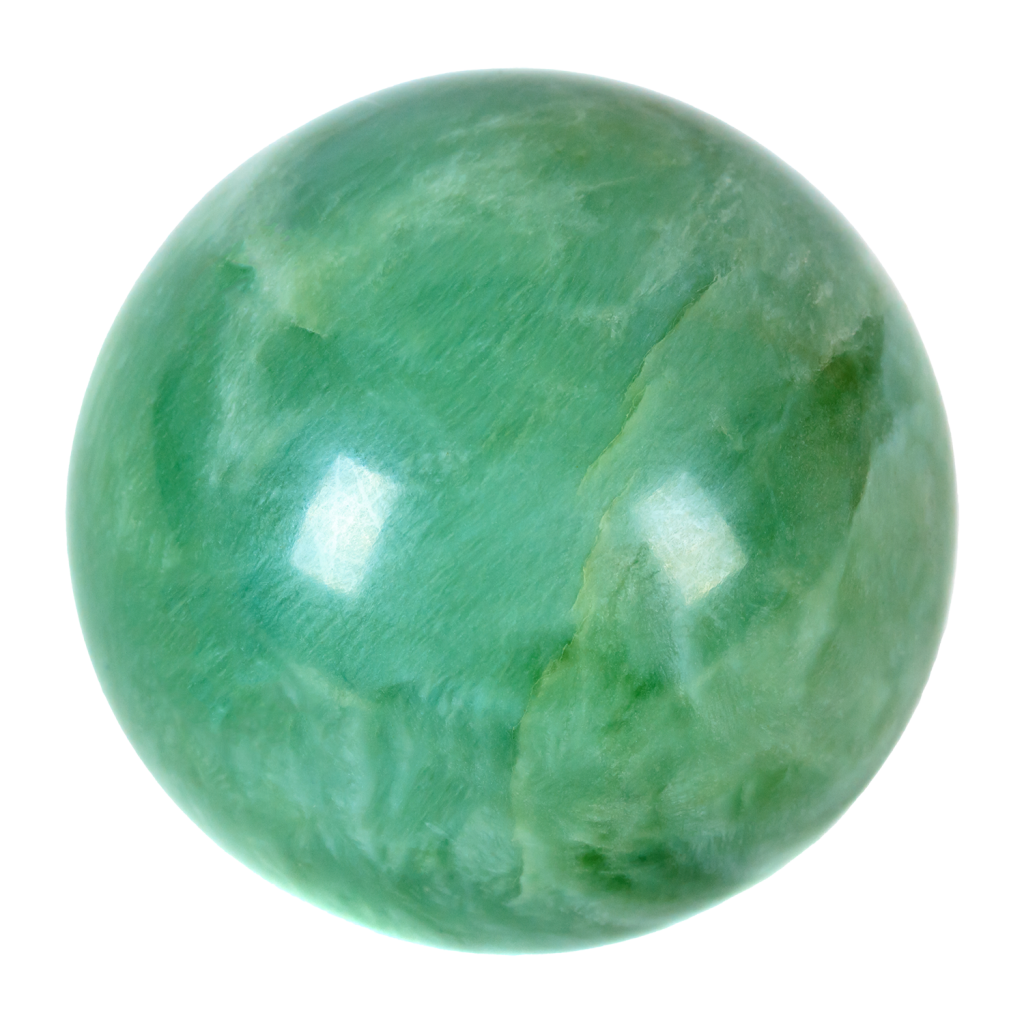
Nephrite
Nephrite is part of the Jade family and the term is used to distinguish it from jadite. Though similar in properties, nephrite is both more rare and more durable. That is why it was used in primitive times to fashion tools such as knives, clubs, and axes and used in modern times to adorn the body when worn as a gemstone. When considering nephrite whether for jewelry or as a carving, remember that there are many gemstones that imitate nephrite. But the problem is they are not as durable. So be sure and stay with a reputable jeweler or carver when shopping for items made of nephrite. Because nephrite is relatively abundant worldwide, it is not a costly gemstone. The price of nephrite carvings, however, can vary significantly depending on the quality of the artisan. The Chinese have prized the nephrite variety of jade more than any other gemstone. For over 3000 years they carved flat discs with a central hole, termed pi, from nephrite to worship heaven.
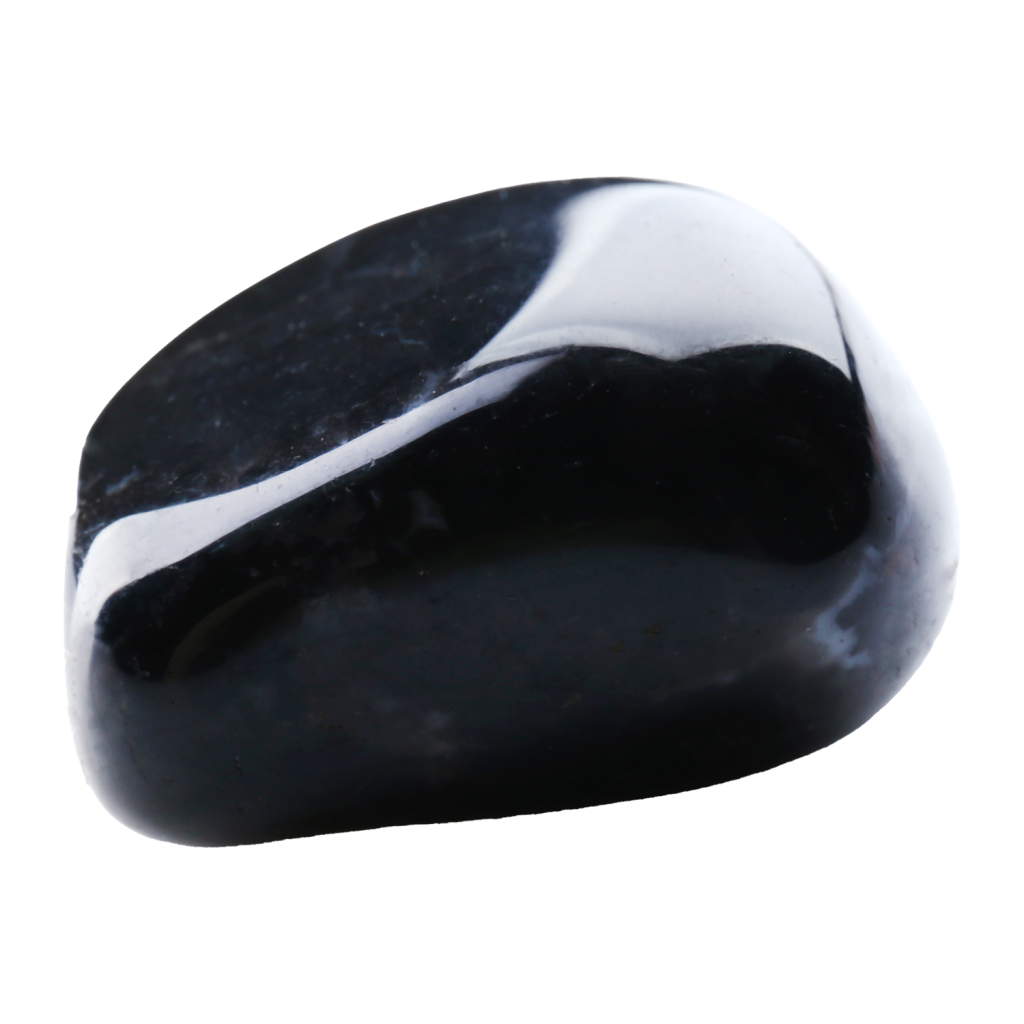
Onyx
The magic of black is seen in jewelry made from onyx, a black chalcedony quartz with a delicate texture that is often carved into cameos. Though still popular with jewelry designers, onyx was especially popular with the ancient Greeks and Romans. There’s an old legend about Cupid finding Venus asleep and taking the opportunity to cut her fingernails with an arrowhead. He left the clippings scattered on the sand and the fates turned them into stone so that no part of the heavenly body would ever perish. The stone, as the story goes, was onyx, which brings up an interesting question, “Did Venus wear Vamp?” There may be an explanation. Back in Greek times nearly all colors of chalcedony from fingernail white to dark black were called onyx. Later the Romans narrowed the term to refer to black and dark brown colors only. Black onyx is used often as a background for color play. Its fine texture makes it ideal for carving and therefore a favored material for today’s lapidaries. Onyx was often used as the perfect foil for carved rock crystal or the ‘drop dead red’ of rubies in art deco designs. It is also popular in marcasite jewelry. Use onyx to add a little black magic to your jewelry design.
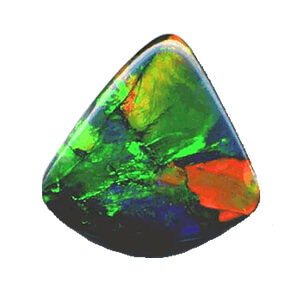
Opal
Travel to Australia to find the worlds finest opals where 95% of them are found in the arid, remote outback deserts. The ancient Australian aborigine lore taught that the Creator came down to earth on a rainbow and the very spot where his foot touched the ground the stones started gleaming in all the colors of the rainbow and the opal was born. There are a variety of opals but all share one characteristic: they shine and sparkle in a constantly varying play of colors described by gemologists as “opalising”. This color play makes the opal attractive, fascinating and valuable. In 1960s a team of Australian scientists analyzed opals with an electron microscope and discovered that small spheres from silica gel causes interference and the refraction of light resulting in “opalising”. Pliny, the famous Roman author, called opal a gemstone which combines the best possible characteristics of the most beautiful of gemstones: the fine sparkle of Almandine, the shining purple of Amethyst, the golden yellow of Topaz, and the deep blue of Sapphire, ”so that all colors shine and sparkle together in a beautiful combination“.
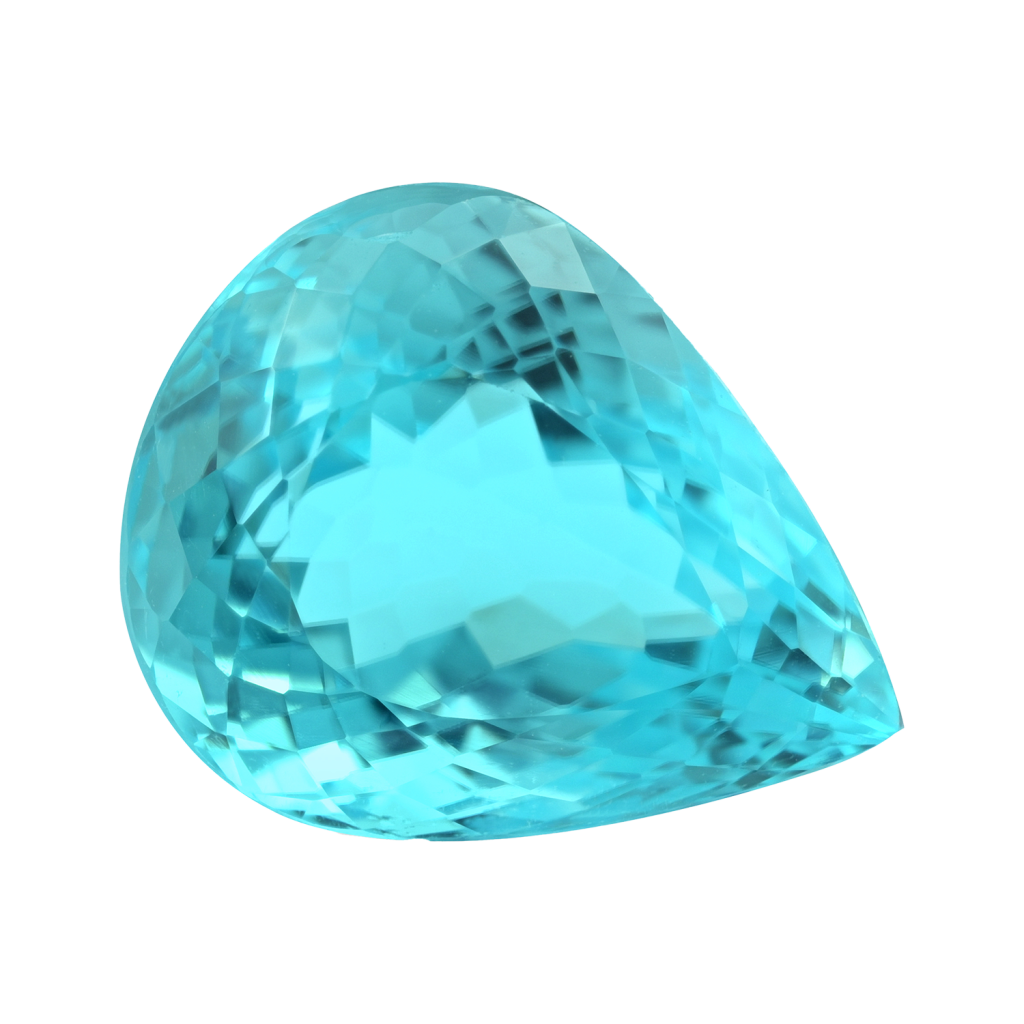
Paraiba Tourmaline
From the Federal Brazilian State of Paraiba comes this petite and precious gemstone with a blue to green hue of remarkable radiance. The turquoise to green colors are unique – not found in any other gemstone in the world – making them exceptional treasures. Another thing that makes them unique is the story of their discovery. Heitor Dimas Barbosa discovered Paraiba tourmaline after several years of digging in the 1980s. It all began in 1981 when he began his first preparations for excavations at an old, dilapidated opencast mine he knew about. He had one deep hole after another drilled in the hard ground, but with no luck. But after a long and tiring five and a half years of drilling and digging, it appeared that a tourmaline find was imminent. Finally, in the autumn of 1989, a handful of exceptional tourmaline crystals were brought up into the daylight and gemologists saw colors never previously observed. Unfortunately Barbosa was ill and not present at their discovery – and the raw crystals were sold before he had a chance to see them. Now, decades later, the hill that yielded the world’s first Paraiba tourmaline has likely yielded its last, as the mine appears to have been exhausted. Tourmalines with a similar hue have been discovered in Africa but the Paraiba tourmalines remain the most sought after of Australian scientists analyzed opals with an electron microscope and discovered that small spheres from silica gel causes interference and the refraction of light resulting in “opalising”. Pliny, the famous Roman author, called opal a gemstone which combines the best possible characteristics of the most beautiful of gemstones: the fine sparkle of Almandine, the shining purple of Amethyst, the golden yellow of Topaz, and the deep blue of Sapphire, ”so that all colors shine and sparkle together in a beautiful combination“.
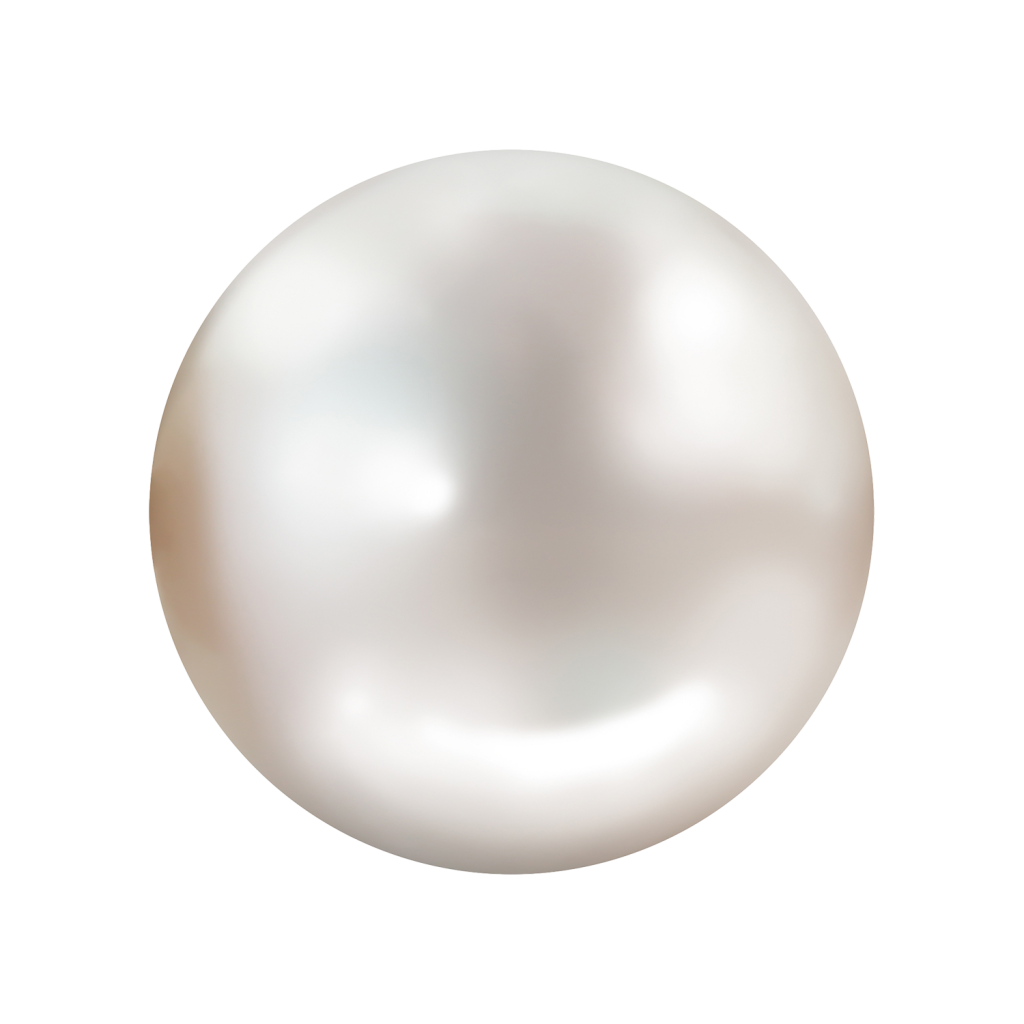
Pearl
In times past pearls were considered to be a sound investment such as gold or real estate. That’s because to find only one pearl thousands of oysters had to be searched. Today people take shell beads and place them inside an oyster, then place it back in the water to be harvested once the oyster has covered the bead with layers of nacre. It’s no longer a mystery which oyster is carrying a pearl, they all are! Most cultured pearls are produced in Japan. The larger oysters of the South Pacific produce South Sea cultured pearls and Tahitian black cultured pearls that are larger in size. China produces freshwater pearls using mussels. You judge the quality of a pearl by the orient (the soft iridescence caused by the refraction of light by the layers of nacre) and by luster (the surface reflectivity and shine). Shape, size and color also impact their value. To tell the difference between an imitation pearl and a cultured and natural pearl rub it against the edge of a tooth. The cultured and natural pearl will feel slightly rough like fine grain sandpaper. Imitations will be smooth as glass.
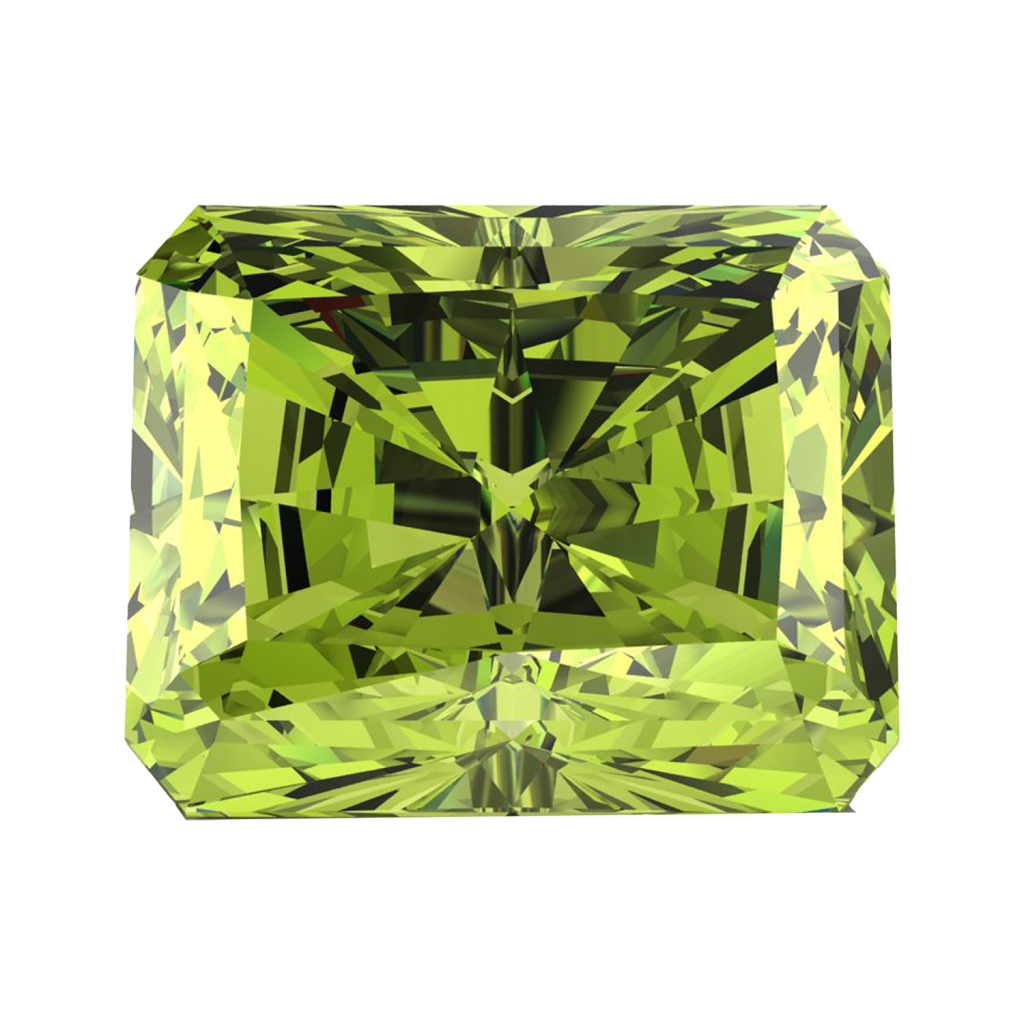
Peridot
The Peridot is one of the few gemstones that come in only one color – a rich green with a subtle suggestion of gold. It is the gemstone of August, perhaps because it is so wearable with a light summer wardrobe. Its vivid green is the perfect compliment to a fresh and feathery summer outfit. The peridot is both old and new. It can be found in ancient Egyptian jewelry from the 2nd Millennium BC. The stones used then came from a deposit on a small volcanic island in the Red Sea, some 45 miles off the Egyptian coast at Aswan, which was not rediscovered until about 1900 (now exhausted). A few years ago deposits of exceedingly beautiful and transparent peridot were located in the Kashmir region (where parts of Pakistan, Afghanistan and India meet China) that have re-ignited interest in this lovely stone. The most beautiful stones come from the border area between Pakistan and Afghanistan. However, the peridot as a gemstone also exists in Myanmar, China, the USA, Africa and Australia. Because of the rich finds in Pakistan and Afghanistan, there is enough raw material on the market, so the right stone can now be found to cater for each individual taste and each pocket. Large, transparent stones of an intense color are, however, rare and correspondingly expensive. Interest in the peridot gemstone is on the rise and you should definitely get to know it better.
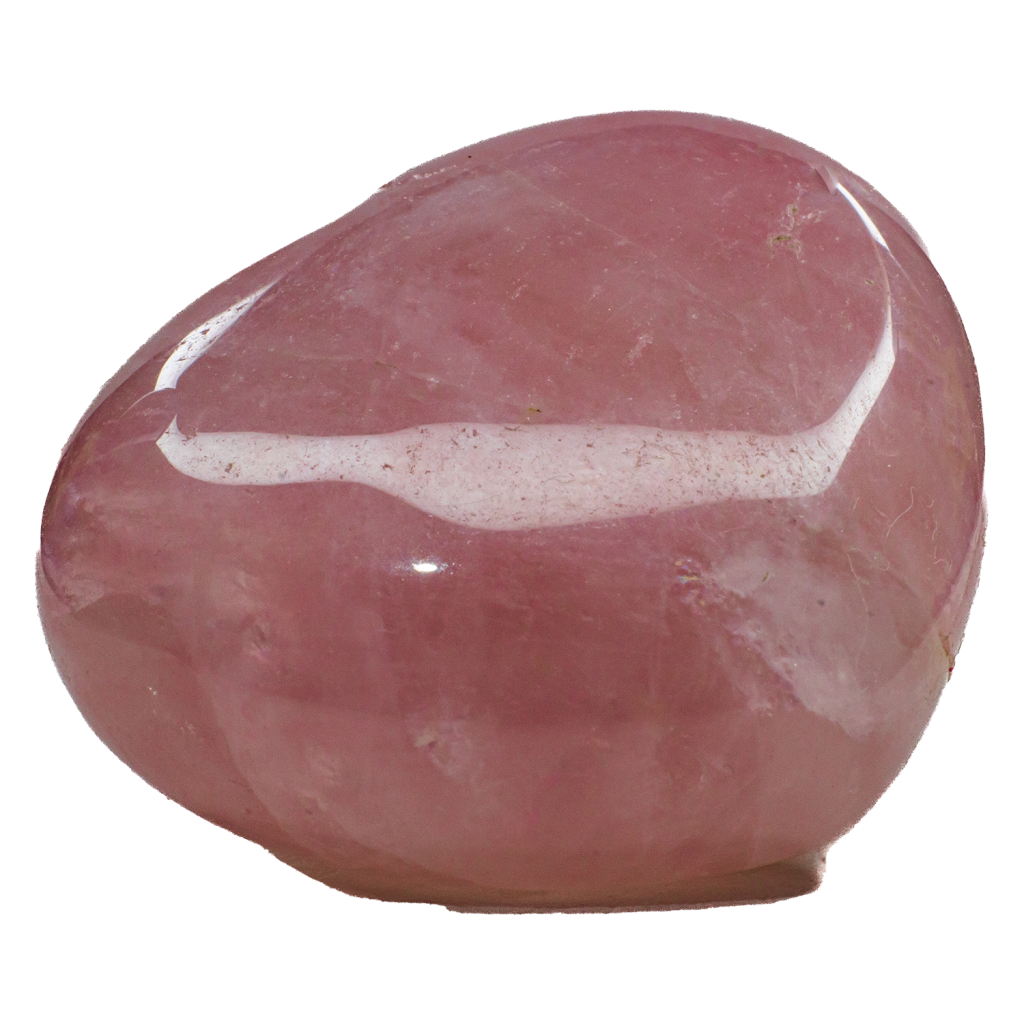
Quartz
There’s lots of quartz out there for gemstone enthusiasts! <p> Rose quartz is a pale pink quartz that can range all the way from transparent to translucent often used for beads, carvings, and architectural purposes. Smoky quartz has a limited market because there is not much demand for brown gemstones. Don’t mistake smoky quartz with smoky topaz. They are different. Tiger’s eye quartz has a lovely golden yellow color that reveals a small ray of light on the surface that resembles the feline eye of a tiger. Rock crystal is the transparent, colorless variety of quartz long believed to be a compact form of ice. Many people believe that wearing quartz crystals benefits their health and spiritual well-being. Rutilated quartz and tourmalinated quartz is transparent rock crystal with golden needles of rutile arrayed in patterns inside it. Each pattern is different and some are breathtakingly beautiful. Chalcedonies is quartz formed not of one single crystal but a number of finely grained microcrystals. Besides the exciting colors of rubellite tourmaline, there is another quality gemstone lovers appreciate…and that’s the consistency of their sparkle! A rubellite does not change its color because of differing light sources. A true rubellite shines as intensely in natural light as it does in artificial light. Nature has formed the rubellite in many colors so every woman can find one to suit her style and grandeur – but it’s not always that easy to do – especially if she is looking for two or more stones of the same color. However, the extravagance and the beauty of this gem will bring great pleasure to anyone who wears one…or two…or three! The most important feature of a ruby is its color with its transparency being of secondary importance. Inclusions, the solid, liquid, or gaseous foreign bodies enclosed within in a ruby, will not prejudice the quality of a ruby unless they diminish its transparency or are located right in the center of its table. Inclusions can even increase the value of a ruby because it is considered a fingerprint of the stone providing evidence of individuality and giving proof that it is of natural origin. The most important ruby deposits in the world are found in the small town of Mong Hsu in the North-East of Myanmar (Southeast Asia). Deposits are also found in Thailand, Sri Lanka and Tanzania with minor deposits in other places around the world including Montana and North Carolina. Beware of many imitations on the market, especially glass imitations and doublets (counterfeit gems made of two pieces, either of smaller gemstones, inferior stones, or glass). If you find the perfect ruby, may I suggest you buy it! It will cost you a small fortune but will bring you great pleasure, and will be an investment well worth keeping. Throughout history, spinel has been confused with ruby because red spinel is a rich, intense red similar to that of a red traffic signal. Frequently expensive rubies are substituted for by spinel in much the same way a diamond is substituted by cubic zirconia. Not to commit a fraud or theft but to prevent one. Spinel may take the place of a ruby that would have been displayed in public by an owner who is insecure about the rubies safety. Better to lose a $100,000 dollar spinel than a $1 million dollar ruby, don’t you agree?
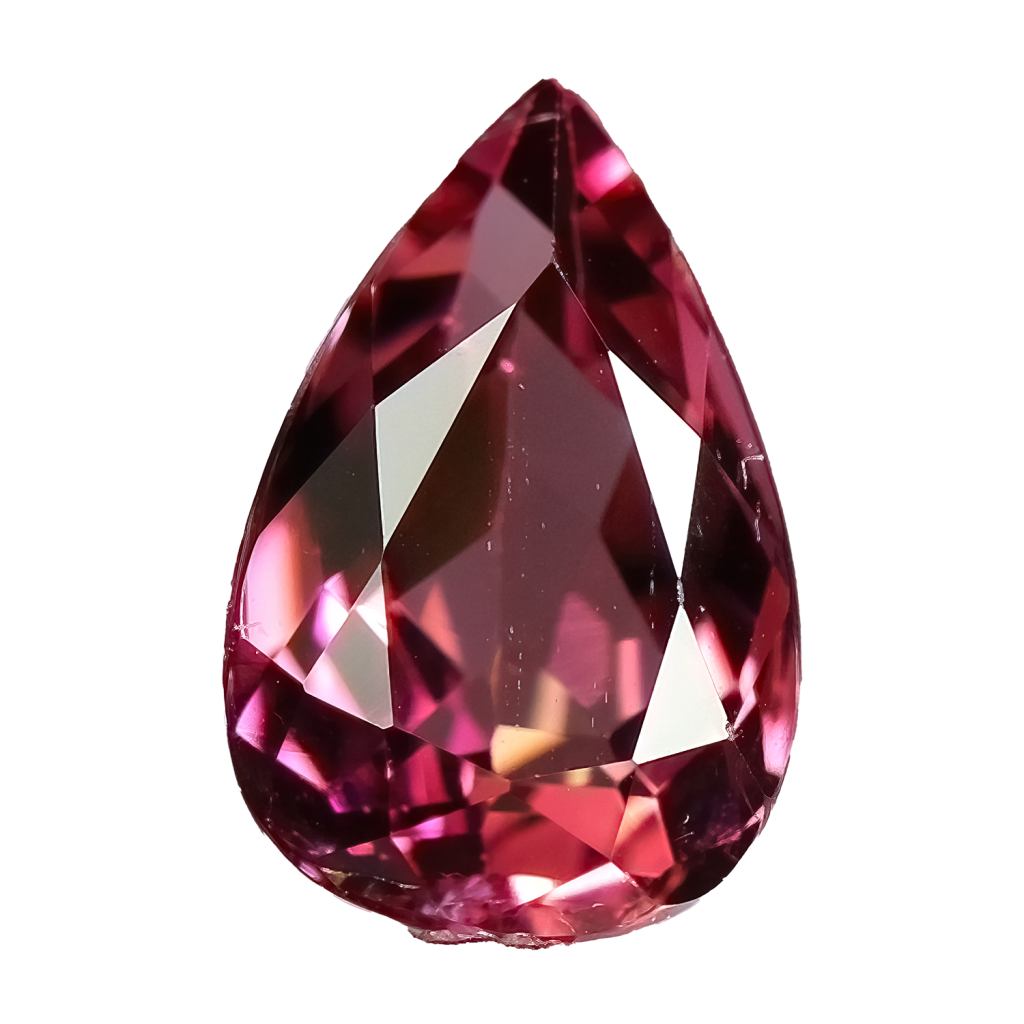
Rubellite Tourmaline
In the fascinating world of gemstones, there are few stones that present such a persuasive erotic aura as does the rubellite tourmaline. From tender pink to shocking pink! From intense violet to a bold ruby red! The nuances of colors of rubellite tourmaline provide the wearer with a variety of looks that some have called “pure seduction”! Besides the exciting colors of rubellite tourmaline, there is another quality gemstone lovers appreciate…and that’s the consistency of their sparkle! A rubellite does not change its color because of differing light sources. A true rubellite shines as intensely in natural light as it does in artificial light. Nature has formed the rubellite in many colors so every woman can find one to suit her style and grandeur – but it’s not always that easy to do – especially if she is looking for two or more stones of the same color. However, the extravagance and the beauty of this gem will bring great pleasure to anyone who wears one…or two…or three! The most important feature of a ruby is its color with its transparency being of secondary importance. Inclusions, the solid, liquid, or gaseous foreign bodies enclosed within in a ruby, will not prejudice the quality of a ruby unless they diminish its transparency or are located right in the center of its table. Inclusions can even increase the value of a ruby because it is considered a fingerprint of the stone providing evidence of individuality and giving proof that it is of natural origin. The most important ruby deposits in the world are found in the small town of Mong Hsu in the North-East of Myanmar (Southeast Asia). Deposits are also found in Thailand, Sri Lanka and Tanzania with minor deposits in other places around the world including Montana and North Carolina. Beware of many imitations on the market, especially glass imitations and doublets (counterfeit gems made of two pieces, either of smaller gemstones, inferior stones, or glass). If you find the perfect ruby, may I suggest you buy it! It will cost you a small fortune but will bring you great pleasure, and will be an investment well worth keeping. Throughout history, spinel has been confused with ruby because red spinel is a rich, intense red similar to that of a red traffic signal. Frequently expensive rubies are substituted for by spinel in much the same way a diamond is substituted by cubic zirconia. Not to commit a fraud or theft but to prevent one. Spinel may take the place of a ruby that would have been displayed in public by an owner who is insecure about the rubies safety. Better to lose a $100,000 dollar spinel than a $1 million dollar ruby, don’t you agree?
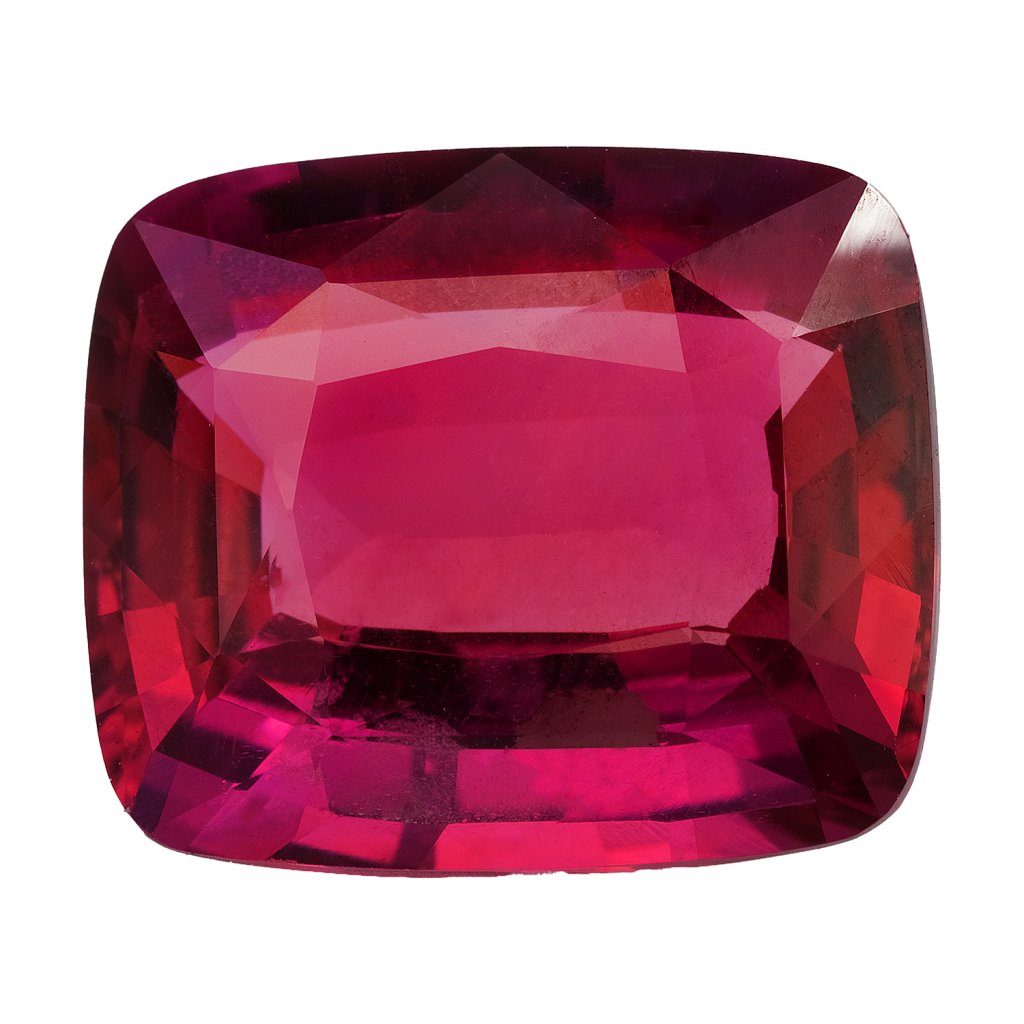
Ruby
For thousands of years the ruby has been considered the undisputed ruler in the world of gems with many hailing it the “King of Gemstones”! It has beautiful color, exceptional hardness, and a brilliance fit for a king’s crown making it one of the most valuable gemstones on earth, able to bring as much or more than a diamond of comparable size. The most important feature of a ruby is its color with its transparency being of secondary importance. Inclusions, the solid, liquid, or gaseous foreign bodies enclosed within in a ruby, will not prejudice the quality of a ruby unless they diminish its transparency or are located right in the center of its table. Inclusions can even increase the value of a ruby because it is considered a fingerprint of the stone providing evidence of individuality and giving proof that it is of natural origin. The most important ruby deposits in the world are found in the small town of Mong Hsu in the North-East of Myanmar (Southeast Asia). Deposits are also found in Thailand, Sri Lanka and Tanzania with minor deposits in other places around the world including Montana and North Carolina. Beware of many imitations on the market, especially glass imitations and doublets (counterfeit gems made of two pieces, either of smaller gemstones, inferior stones, or glass). If you find the perfect ruby, may I suggest you buy it! It will cost you a small fortune but will bring you great pleasure, and will be an investment well worth keeping. Throughout history, spinel has been confused with ruby because red spinel is a rich, intense red similar to that of a red traffic signal. Frequently expensive rubies are substituted for by spinel in much the same way a diamond is substituted by cubic zirconia. Not to commit a fraud or theft but to prevent one. Spinel may take the place of a ruby that would have been displayed in public by an owner who is insecure about the rubies safety. Better to lose a $100,000 dollar spinel than a $1 million dollar ruby, don’t you agree?

Sapphire
The name sapphire is derived from the Greek meaning “blue”. The sapphire does have a deep rich blue that can vary all the way to a pale blue. It can also be found in almost every color in the spectrum including brown, orange, yellow, green indigo, violet, or mauve. Blue, however, is the most popular. So, when choosing a suitable sapphire, keep in mind the color you want. Which one you choose may depend on your skin tones, the type of jewelry you are wearing, and the particular fashion statement you wish to make. Also look at the quality of the stone. Examine it from all angles and ensure the color is even throughout the stone.Choose what YOU want, but most people choose blue. Why? Because sapphire blue symbolizes loyalty as in the term “true blue”. The blue can also give expression to love and longing as found in George Gershwin’s “Rhapsody in Blue”. And do you remember the name of the first computer that succeeded in defeating a world chess champion? It was “Deep Blue”. The price of a sapphire can also make you blue as top quality sapphires are extremely rare. Throughout history, spinel has been confused with ruby because red spinel is a rich, intense red similar to that of a red traffic signal. Frequently expensive rubies are substituted for by spinel in much the same way a diamond is substituted by cubic zirconia. Not to commit a fraud or theft but to prevent one. Spinel may take the place of a ruby that would have been displayed in public by an owner who is insecure about the rubies safety. Better to lose a $100,000 dollar spinel than a $1 million dollar ruby, don’t you agree?
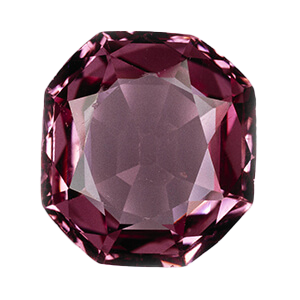
Spinel
If you like a variety of colors available in a gemstone you will really like spinel. There are red, violet, pink, blue, orange, and black spinels. Finding your favorite color could take you on a tour of the world. The best red, pink and orange spinels originate from the rich gem gravels of Burma’s Mogok Stone Tract. The best blue and violet spinels are found in Sri Lanka. Gem spinel is also found in Vietnam, the Pamir mountains of Tajikistan, and in Tanzania and Madagascar. Black spinel is mind in Thailand. Throughout history, spinel has been confused with ruby because red spinel is a rich, intense red similar to that of a red traffic signal. Frequently expensive rubies are substituted for by spinel in much the same way a diamond is substituted by cubic zirconia. Not to commit a fraud or theft but to prevent one. Spinel may take the place of a ruby that would have been displayed in public by an owner who is insecure about the rubies safety. Better to lose a $100,000 dollar spinel than a $1 million dollar ruby, don’t you agree?
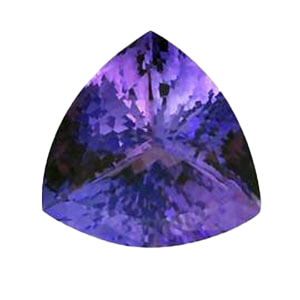
Tanzanite
Millions of years ago in the shadow of Mt. Kilimanjaro in Africa a unique combination of metamorphic rocks deposits grew into precious crystals beneath the weight of the great mountain. For millenniums they were unknown to man until one day in the late 1960s some passing Masai shepherds saw a sparkle of light reflecting off of some crystals that were finally exposed to the sun. They took them along, shared them with the world, and Tanzanite, an extraordinary gemstone found only in Tanzania, was revealed. The search for the blue stone surrounded by a fine hint of purple continues today mainly in smallish mines – only in Tanzania. For the most part only small grains are found, but from time to time mineworkers discover a larger crystal. Though only recently discovered it has become one of the most coveted gemstones in the world. The deep blue with the slightly purple tinge of tanzanite makes it one of the most flamboyant and elegant gemstones available. Own a tanzanite gemstone and you will immediately and dramatically distinguish yourself from the conventional gemstone collector.Throughout history, spinel has been confused with ruby because red spinel is a rich, intense red similar to that of a red traffic signal. Frequently expensive rubies are substituted for by spinel in much the same way a diamond is substituted by cubic zirconia. Not to commit a fraud or theft but to prevent one. Spinel may take the place of a ruby that would have been displayed in public by an owner who is insecure about the rubies safety. Better to lose a $100,000 dollar spinel than a $1 million dollar ruby, don’t you agree?
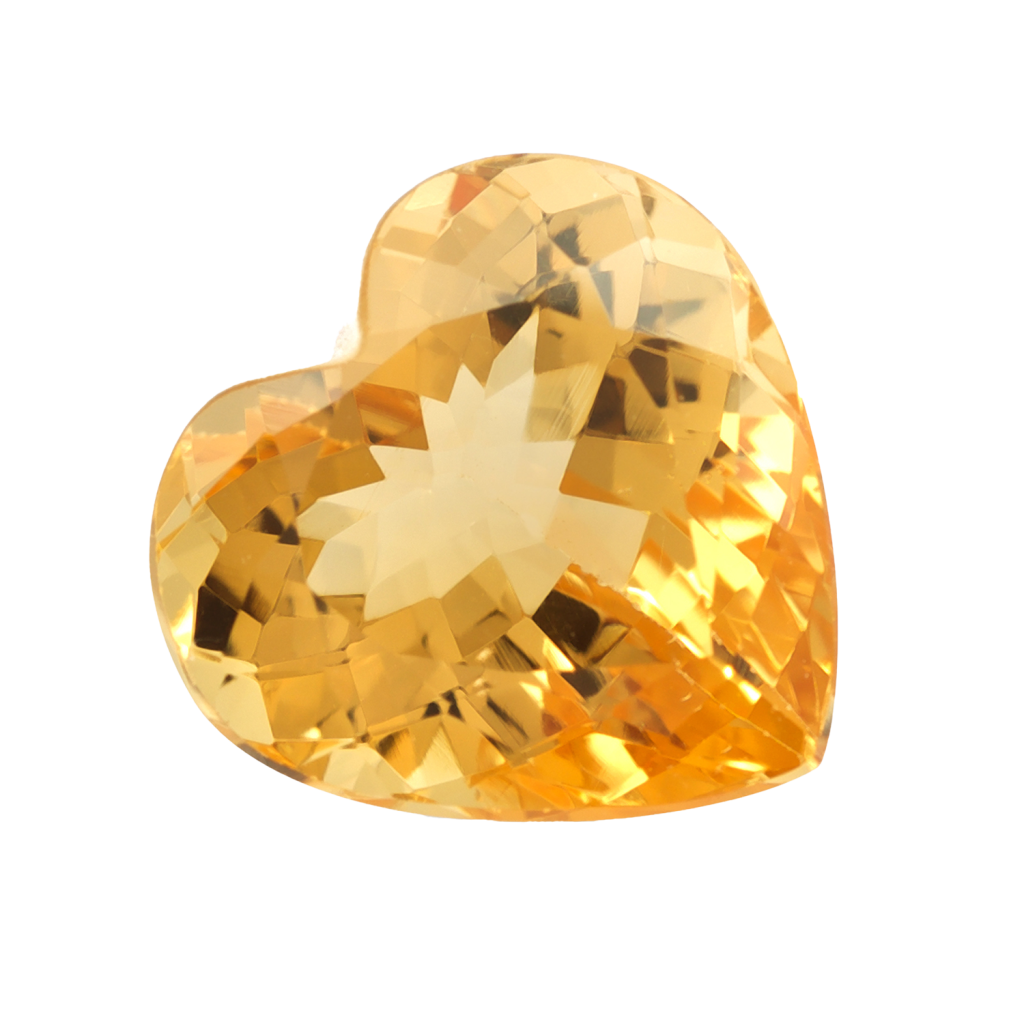
Topaz
Topaz is known as an apocalyptic stone because it will be used to form the foundations of the twelve gates to the New Jerusalem, the Holy City of God, heaven itself! The Romans dedicated the topaz to Jupiter. This tells us that topaz has been known for well over 2,000 years and is a symbol of beauty and splendor. Mystics believe it can dispel sadness, anger, and nighttime fears. “Believers” think it will warn them of poisions and protect them from sudden death. It is reputed to make men handsome and intelligent, and sterile women fertile and happy. But don’t rely too much on those myths because one of them says that if you throw a topaz into a pot of boiling water that you can dip your hand into it and pull it our unharmed. It’s a beautiful stone, but I’m not going to try that! Topaz is the stone month of November
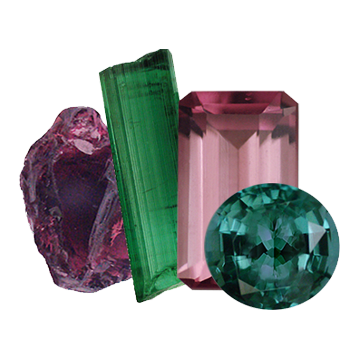
Tourmaline
There is an old Egyptian legend that says Tourmaline has a wide variety of colors because as it made its way up from the center of the earth that it passed over a rainbow and in so doing, it took on all the colors of the rainbow. Indeed, if you like variety of color in your gems, you will love Tourmaline as this lovely gem comes in an incomparable variety. Even the name “Tourmaline” helps to define the gem as it comes from two Singhalese words “tura mali” which mean something like “stone with mixed colors.” There are Tourmalines from red to green and from blue to yellow. They often have two or more colors in a single stone. There are Tourmalines that change their color when take them outdoors and then change again when brought into artificial light. No two tourmalines are exactly alike so you can probably find one to meet a variety of your personal needs or moods. The wide color spectrum of Tourmaline surpasses that of all other precious stones. In ancient times magical powers were attributed to this stone. Today it is considered the gemstone of passion and friendship. Some believe that if you give your beloved a Tourmaline that your love will be miraculously enduring. Tourmalines are found Africa, Sri Lanka, Brazil and in California and Maine. The variety of price for the Tourmaline is almost as wide as the spectrum of its color so chances are there is a Tourmaline just for you.
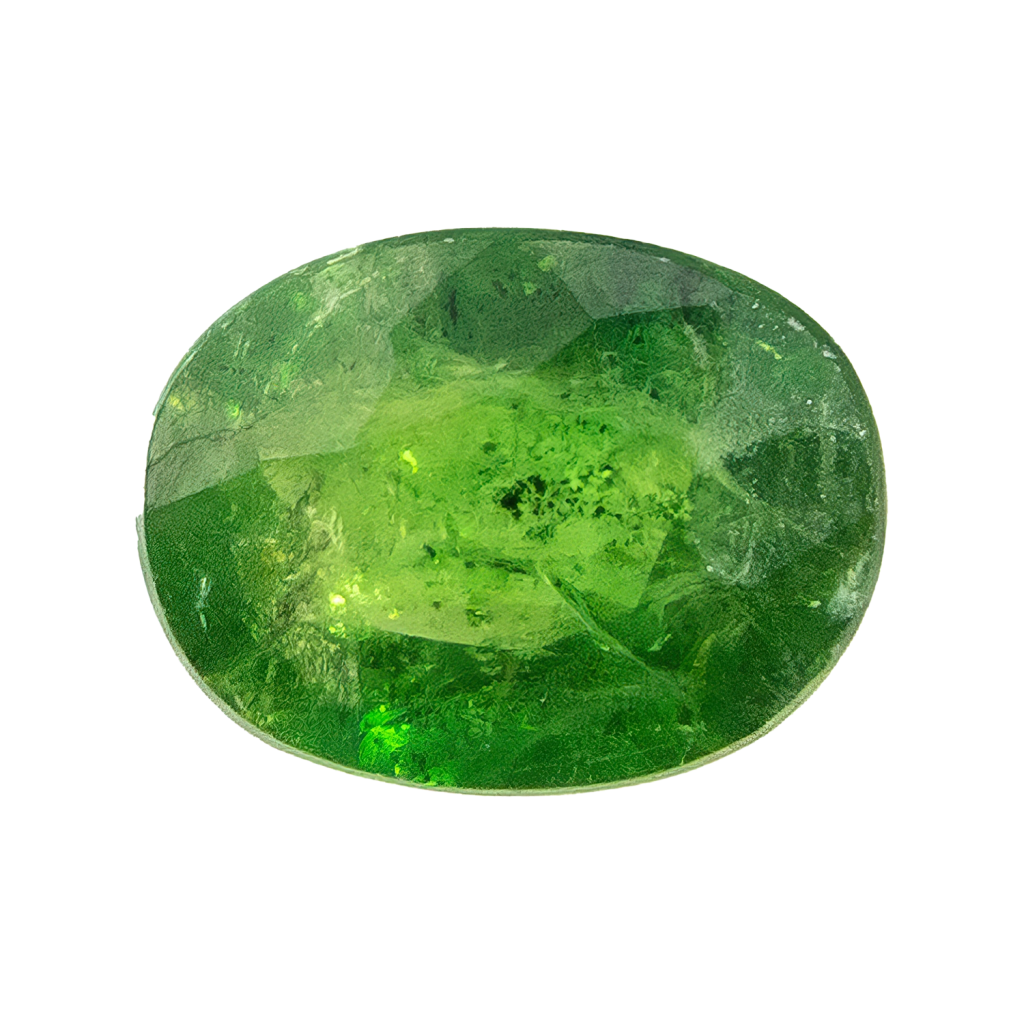
Tsavorite
Tsavorite gets its name from the world-famous Tsavo National Park located in Kenya where only a few mines yield the shining green garnet. In 1967 Campbell R. Bridges, a British geologist was searching for gemstones in Tanzania (East Africa) when he came across some peculiar potato-like nodules of rock. After examining them he realized he had discovered green grossularite, a mineral that belongs to the colorful garnet group. He was impressed at the extraordinary color and superior clarity but the tremendous forces of nature over millions of years had damaged most of the crystals so badly that there were only grains or fragments to be found. Bridges postulated that the geologic seam bearing the gemstones might continue across the border into Kenya. He was right, and in 1971 he discovered tsavorite in neighboring Kenya. Here Bridges was able to register officially and begin to mine the deposit, but Africa would prove a challenge. To protect him self from wild animals he lived in a tree house, and to keep his gemstones from being stolen he used a python to watch over them. Now, thanks to Campbell Bridges, you can purchase vivid green tsavorite at a reasonable price and you won’t have to worry about the python.
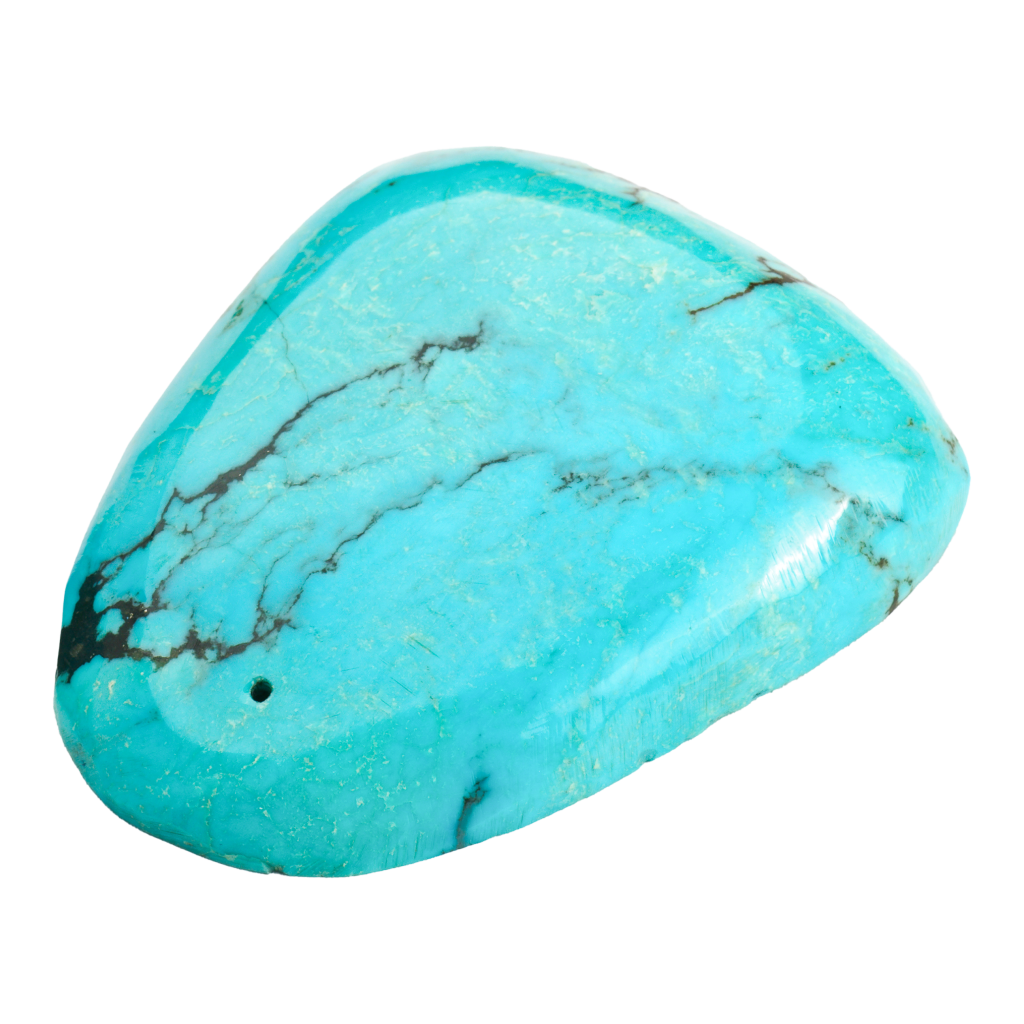
Turquoise
Once upon a time a long time ago in places far away this gemstone was thought to bring good fortune to the wear and even considered to be a holy stone. Turquoise was used as an inlay in the grave furnishings in Egyptian tombs dating from approximately 3000 BC. In the ancient Persian kingdom, turquoise was worn around the neck or wrist as a protection from unnatural death. The Persians (present day Iran) believed that if the turquoise changed color it meant that danger was at hand. The scientists later debunked this speculation and proved that color change can be caused by light, dust, cosmetics, or the acidity of the skin. The Aztecs in Mexico, believing the stone was holy, once decorated their ceremonial masks with turquoise. You may have jewelry made with turquoise created by the Indians of North America. They still believe that the sky-blue gemstone creates a direct connection between the sky and the sea. Top quality turquoises are of a pure, brilliant sky blue. The most impressive turquoises come from deposits in the north of Iran. Deposits are also found in the USA, Mexico, Israel, China, and Afghanistan.
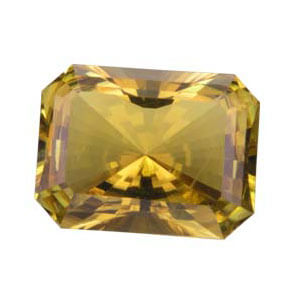
Yellow Tourmaline
Brazil gave the world Paraiba tourmalines – Malawi has brought us yellow tourmalines. New to the gemstone world, yellow (canary) tourmalines were discovered in this century – the year 2000. The cheerful sunny yellow does not always come out without some effort. Some of the stones must first be placed in a 700 degree Celsius oven for a period of time or else remain with a slight brownish tinge. The heat treatment transforms the light brown into the more popular joyful yellow. The mining of yellow tourmalines remains a challenge as only 10% of the yield is of gemstone quality and nearly all yellow tourmalines are less than one carat. And here is something you don’t often hear about a gemstone – it’s odor. Yellow tourmalines have a pleasurable odor noticeable only to the cutter. Experienced cutters like to cut yellow tourmalines because they claim they are the only gemstones that small good! Why do they smell? Because the owner of the gemstone mine in Malawi discovered that the unwanted black material surrounding the crystals was removed easier if the raw crystals were boiled in water that had lemon juice added in. The wearer, however, cannot discern an odor of any kind.
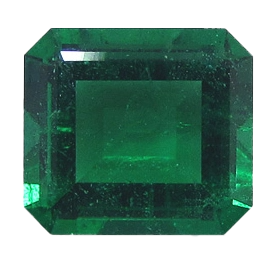
Zambian Emerald
The Zambian emerald, although discovered in the late 40’s, was not commercially mined until the 1950’s. Today Zambia, located in south-central Africa, is one of the world’s leading producers of fine emeralds. The Zambian emerald is greatly esteemed for its remarkable clarity and its intense color: green through and through. It also retains its magnificent hue even in small stones of less than 0.5 ct. Another attraction is price – Zambian emeralds are less expensive in the high-end ranges as prices are three to five times higher for Colombian emeralds than for Zambian, a factor attributable to worldwide demand. Zambia is the first emerald producer to give consumers who cannot spend the enormous sums charged for fine emeralds a chance to buy eye-clean stones on a regular basis. If you would like to see a couple of truly beautiful Zambian emeralds stop in anytime and I’ll be happy to show them to you.
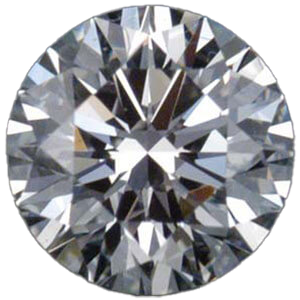
Zircon
WARNING: Don’t confuse natural zircon with cubic zirconia, the laboratory-grown diamond imitation. It is actually a famous gem of many colors, known for centuries for its luster and fire. The uninformed may look upon it as a cheap diamond because for years the most popular zircon was of the colorless variety, appearing at first glance to be a diamond. Today the most popular color is blue zircon, often used as an alternative birthstone for December. Zircon is also available in green, dark red, yellow, brown, and orange. In the middle ages some believed that zircon relieved pain, prevented nightmares, ensured a deep and tranquil sleep, and brought wisdom, honor and riches to the wearer. If your zircon stone loses its luster, some believe it is a warning of danger. Some zircons do lose their luster, but it is because of over exposure to the sun and the luster can be recalled by a special heat treatment. The wide variety of colors of zircon, its rarity, and its relatively low cost make it a popular collector’s stone.
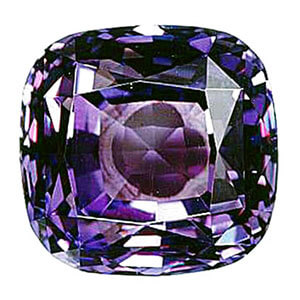
Zoisite
Zoisite is named after the Slovene scientist Baron Sigmund Zois von Edelstein. He was the first to realize that this mineral, first discovered in the Saualpe Mountains, a rolling mountain range in the Alps, could be fashioned into gemstones and other forms. Zoisite is often carved, used for jewelry, usually in relatively large pieces, also spheres, eggs, hearts, pyramides, and even palm stones. The green and pink zoisites have been used as jade substitutes. Tanzanite, a form of zoisite, is widely used as a gemstone. At least until after the September 11, 2001 attacks when a rumor was circulated throughout the gemstone marketplace that sales of tanzanite had helped fund Osam bin Laden and the Al-Quaeda network. As a result, several jewelers, especially in the United States, imposed a boycott on further imports of the gem, and some of them even removed tanzanite-bearing jewelry from their active inventories. Eventually the U.S. State Department declared that there was no evidence to support the rumor so most jewelers lifted the boycott.
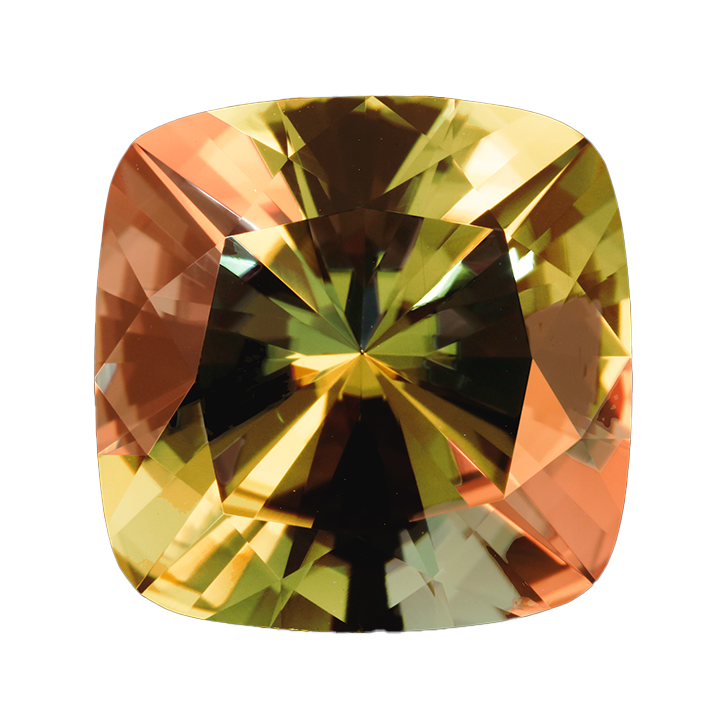
Zultanite
Color change gems are special but this exotic and rare stone’s color changing characteristics are mesmerizing. Zultanite displays a wide range of hues from kiwi greens in sunlight to raspberry purplish-pinks in candlelight. It is different from other color change gems such as Alexandrite because Zultanite’s color change is not limited to two basic colors. It can display greens, pinks, yellows, champagnes, and gingers in different light sources. Like all color change gemstones, the larger the Zultanite, the more visible the color change. Zultanite is very popular with savvy jewelry connoisseurs because of its natural sparkling beauty, color changing qualities, but also because of its exclusivity. It is so rare there is only one source in the world for it: a remote mountain area in Anatolia, Turkey. It was named by Murat Adgun in honor of the 36 sultans who ruled the Ottoman Empire in Anatolia in the late 13th century. Zultanite is a true Turkish delight. But wait, there’s more to this astonishing gemstone: Some Zultanite also possess the desirable cat’s eye effect caused by the reflection of light by parallel inclusions.



